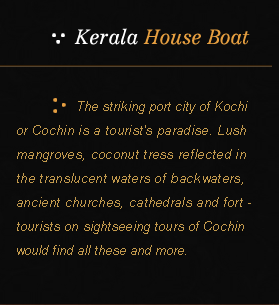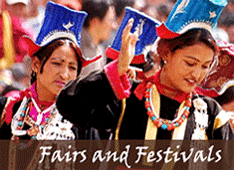Home > North India Tour Packages > Classical India with Rajasthan & Caves

Duration : 21 Days & 20 Nights
Location : Delhi – Varanasi – Khajuraho – Orchha – Agra – Jaipur – Mandawa – Bikaner – Jaisalmer – Jodhpur – Udaipur – Aurangabad – Mumbai.
Location : Delhi – Varanasi – Khajuraho – Orchha – Agra – Jaipur – Mandawa – Bikaner – Jaisalmer – Jodhpur – Udaipur – Aurangabad – Mumbai.
Day 01
Delhi Arrival:
COMPANY REPRESENTATIVE will receive you on arrival at the DELHI AIRPORT and transfer to your hotel.
DELHI, the capital of kingdoms and empires is now a sprawling metropolis with a fascinating blend of the past and the present. It is a perfect introduction to the composite culture of an ancient land. A window to the kaleidoscope - that is India.
Overnight will be at Delhi.
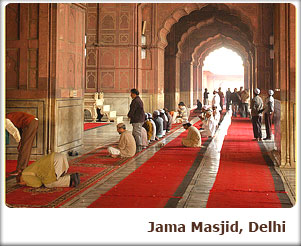 Day 02
Day 02
Delhi:
After breakfast proceed for a day sightseeing tour of the city.
The city is dotted with historic monuments that are the most popular tourist attractions in Delhi. Apart from the monuments, there are museums, markets, gardens and eating joints that you can visit on your tour of Delhi. Some of the important sightseeing places in Delhi are given below.
INDIA GATE: It is the war memorial dedicated to Indian soldiers, who died during World War I. The name of many soldiers who died during World War I is inscribed on its wall. Edward Lutyens, the man who planned and built New Delhi, designed India Gate. Almost every foreign tourist visits the monument. 'Amar Jawan Jyoti', the eternal flame is added later. The eternal flame runs on gas and is a tribute to soldiers who lost their lives in the service of the nation.
RED FORT: Located in Old Delhi, the Red Fort or Lal Quila is a popular tourist attraction in Delhi. The fort was built by the Mughal emperor Shah Jahan in 1648, when he moved his capital from Agra to Delhi. The construction of the Fort started in 1638 and it was completed 10 years later in 1648. Some of the important spots inside the Red Fort include royal baths or Shahi hamams, Shahi Burj, Moti Masjid or the Pearl Mosque, Diwan-e-Aam and Diwan-e-Khas.
JAMA MASJID: The largest mosque in India, the Jama Masjid was built by Shah Jahan 1656 AD. About 5,000 laborers and craftsmen worked for six years to complete the monument. The mosque can accommodate about 25,000 people. The mosque is located in the old Delhi. The domes are built in white marble. The prayer hall of the mosque has 260 pillars.
OLD FORT: Old Fort or Purana Quila as it is called is located near Pragati Maidan on the Mathura Road. You can club a visit to the Old Fort with your tour of Red Fort and Jama Masjid as the three monuments are located in Old Delhi and are not too far from one another. Humanyun’s started the construction of the fort in 1533 AD, but before the completion of the fort, Sher Shah Suri defeated him and captured Delhi. Sher Shah Suri completed the fort and named it -Shergah. He added many structures to the fort, of which Qila-I-Kuhna Mosque and Sher Mandal are worth mentioning. In 1555, Humanyun’s re-captured Delhi and converted Sher Mandal into a library.
HUMANYUN’S TOMB: Humanyun’s Tomb is mausoleum of the Mughal emperor Humanyun’s. Bega Begum also known as Haji Begum, wife of Humayun constructed the mausoleum for her husband. The tomb was built between 1562 and 1572 AD. The tomb was designed by Mirak Mirza Ghiyuth.
QUTAB MINAR: The construction of the Qutab Minar was stated by Qutub-ud-din Aibak in 1199 AD but he died before completing it. His son-in-law and successor Iltutmish completed the construction of the building. Qutab Minar is located in Meharauli.
LOTUS TEMPLE: Also known as the Bahai Temple, the monument was opened to public only in 1986. Located near Nehru Place, the Lotus Temple is designed like a lotus flower. If you are looking for some moments of peace and tranquility in the crowded city, Lotus Temple is the ideal place to visit.
Apart from the above-mentioned sightseeing options, there are various other tourist attractions that you can visit on your tour of Delhi. Some other sightseeing places in Delhi include Lodi Gardens, National Museum, Jantar Mantar, Dilli Haat and the Garden of Five Senses.
Overnight will be at Delhi.
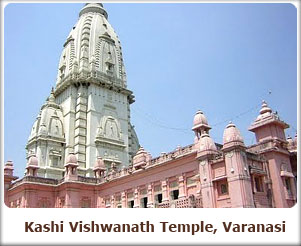 Day 03
Day 03
Delhi – Varanasi:
By Air
Breakfast will be at hotel.
Transfer in time to airport for flight to Varanasi. Upon arrival at Varanasi, you will be met and transferred to hotel.
Picturesquely situated on the crescent shaped left bank of the holy River Ganges, Varanasi, one of the ancient seats of learning in India, is said to be a compound of the names of two streams, the Varuna and the Assi, which still flow in the north and south of the city respectively. This name seems to have been corrupted, in medieval times to Varanasi, which was in use till May 1956, when it was changed to Varanasi, by an order of the Government of India. Varanasi is probably one of the most ancient living cities in India. From time immemorial it has been a great religious center for Hindus and one of their most sacred places of pilgrimage, being visited by millions of people every year. To every visitor Varanasi offers a breathtaking experience. The rays of the dawn shimmering across the Ganges; the high-banks; the temples and shrines along the banks bathed in a golden hue …soul stirring hymns and mantras along with the fragrance of incense filling the air…and the refreshing dip in the holy waters gently splashing at the Ghats. Varanasi – The land where experience and discovery reach the ultimate bliss. Varanasi is also renowned for its rich tapestry of music, arts, crafts and education. Some of the world – renowned exponents India has produced in these fields were schooled in Varanasi’s cultural ethos. Luminaries apart, Varanasi abounds in the art of silk weaving, an exotic work of art which manifests itself in precious Banarasi silk sarees and silk brocades which are cherished as collector’s items across the world today.
Enjoy the evening AARTI at the GHATS. The guide will be giving a commentary to you on the proceedings and meanings of the chants during the AARTI of the river.
Later spend the evening shopping in the lanes of Varanasi.
Overnight will be at Varanasi.
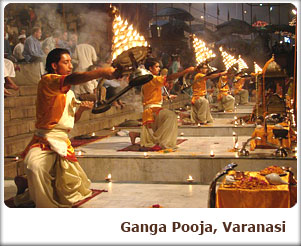 Day 04
Day 04
Varanasi:
Proceed in the morning to Daswamedh Ghat and take a boat ride on the sacred river Ganges to see the cremation Ghats and witness the living traditions of one of the world's oldest and most important religions.
Cruise the Ganges. Perhaps the best way to enjoy the site of Varanasi’s Ghats is a cruise along the river at dawn. Hundreds of bathers, worshippers performing religious rites, holy men practicing yoga and people washing clothes gather at the river’s banks. (To start at 0500 hrs. for the best lifetime experience) For you to appreciate this remarkable city, we’ll transfer you to the banks of the River Ganges before the sun rises. Board a boat with your guide and proceed to the middle of the river, where at sunrise the sight unfolds before you. Thousands of faithful come daily to the banks to bathe and pray while in the background, temples and palaces rise in tiers from the water’s edge. Return for a walk through the cobblestone streets along the banks of "Ganga". As shops are opening, the place now becomes a beehive of activity as the faithful are coming and going.
Return to hotel for a sumptuous breakfast.
Proceed for the sightseeing.
Bharat Mata Mandir: Bharat Mata Mandir or Bharat Mata Temple is one of its kinds in Varanasi. Contrary to what most of the tourists believe, this temple is not dedicated to any God, Goddess or certain deity for that matter. It is dedicated to the human manifestation of India popularly called Mother India or Bharat Mata in Hindi. The temple was inaugurated by non other than Mahatma Gandhi, The father of the Indian Nation.
Banaras Hindu University: BHU was built in the year 1916-1917 under the special act of parliament passed in the year 1915 named BHU act. The act was passed by the interim parliament that worked under the imperial British government. Mahamna Pundit Madan Mohan Malaviya and Annie Besant did the conceptualization and implementation of this university. Raja of Kashi donated 1350 acres of land for the construction of the sprawling campus.
Durga Mandir: Goddess Durga is a significant manifestation of Parvati, the consort of Lord Shiva. In fact she is said to be Shakti, or the manifestation of Parvati that signifies the female element of Power and harmony in nature. This is precisely because a Bengali Maharani built this temple in the 18th century.
Kashi Vishwanath Mandir: The Vishwanath temple is synonymous to Varanasi. Vishwanath Temple is the most sacred and the most famous temple in Varanasi. In fact, Vishwanath Temple is extremely popular in other parts of India too. A considerable chunk of foreign visitors in India come to Varanasi every year to get a glimpse of the Vishwanath Temple even though the followers of Semitic religions are not allowed to enter the sanctum of the temple.
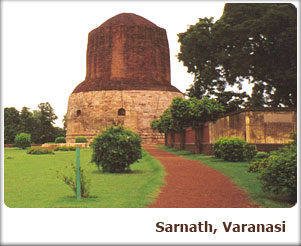 Tulsi Manas Mandir: Tulsi Manas Temple has a very historical as well as cultural importance for not only Varanasi but also for the whole of India. This is because Ramayana was composed at this very place. Goswami Tulsi Das was the man who composed Ramayana in Hindi in the form of "Ram Charit Manas".
Tulsi Manas Mandir: Tulsi Manas Temple has a very historical as well as cultural importance for not only Varanasi but also for the whole of India. This is because Ramayana was composed at this very place. Goswami Tulsi Das was the man who composed Ramayana in Hindi in the form of "Ram Charit Manas".
Visit Sarnath ‑ 5 miles out of Varanasi: The great Buddha enhanced the sanctity of Varanasi by choosing the environs of the city to preach his first sermon at Sarnath, (only 10 Kms away) after attaining enlightenment. Later, Ashoka, the great Mauryan Emperor erected magnificent stupas and other buildings along with his mighty stone pillar, Dharmarajika Stupa. The 110 ft. tall Damekh Stupa marks the place where Buddha preached first sermon. Sarnath has been a premier centre for Buddhism. It is a rich collection of ancient Buddhist relics and antiques comprising numerous Buddha and Bodhisatva images on display at the Archaeological Museum (1000 hrs to 1700 hrs. Open all days except Friday)
Overnight will be at Varanasi.
Day 05
Varanasi – Khajuraho:
By Air
Breakfast will be at the hotel.
Proceed to the airport for flight to Khajuraho. Reach and check into the hotel.
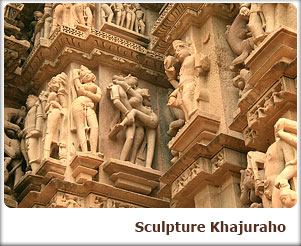 Khajuraho, which has lent its name to a complex of exquisite Hindu and Jain temples, is a small town located amidst the forested plains of Bundelkhand in north-central Madhya Pradesh. The beautiful temples that dot Khajuraho are believed to have been built by the mighty Chandela rulers in the 9th and 10th century AD. The engravings on these temples are highly sensual and erotic that depicts in graceful forms intimate scenes of the whole range of human emotions and relationships. These sculptures congeal in stone a lyrical paean to love and passion and reflect the Chandela dynasty/’s immense appreciation for art.
Khajuraho, which has lent its name to a complex of exquisite Hindu and Jain temples, is a small town located amidst the forested plains of Bundelkhand in north-central Madhya Pradesh. The beautiful temples that dot Khajuraho are believed to have been built by the mighty Chandela rulers in the 9th and 10th century AD. The engravings on these temples are highly sensual and erotic that depicts in graceful forms intimate scenes of the whole range of human emotions and relationships. These sculptures congeal in stone a lyrical paean to love and passion and reflect the Chandela dynasty/’s immense appreciation for art.
Architecturally, the temples are built in the north Indian Nagara style. The sculptor/’s fine skill and a sense of imagination have given form to human emotion in the form of spiritual and physical love. Every façade—wall, window, pillar, and ceiling—is carved with figures of mythical and historical origins, and while many of these depict full-breasted, girdle-waisted women in forms of innocent play, they also depict carnal love.
Khajuraho combines history, architecture, culture and environment with delectable charm. It is a town that takes you away from the noise and pollution of the city, with its fresh air and scenic countryside. For convenience, the temples of Khajuraho are divided into the Western, Eastern, and Southern groups. The Western Group, situated opposite the Government of India Tourist Office, has 14 temples. The Chaunsath Yogini, Lalguan Mahadev, Parvati, Varaha, Matangesvara, Lakshmana, Vishvanath and Nandi, Chitragupta, Devi Jagdamba and Kandariya Mahadeo temples belong to this group. The Eastern Group, 2.4 km from the Tourist Office, consists of seven temples (four Jain and three Hindu). The Parsvanath, Adinath, Shantinath, and Ghantai temples belong to the Jains while the Vamana, Javari and Brahma are Hindu temples. The Southern Group, about 5 km from Khajuraho, contains the Chaturbhuj and Duladeo temples.
Visit the WESTERN SET OF TEMPLES.
Enjoy the Light and Sound show in the evening.
Overnight will be at Khajuraho.
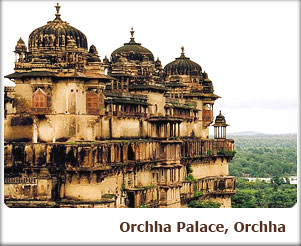 Day 06
Day 06
Khajuraho – Orchha - Jhansi;
By Road 175Kms/04hrs
Jhansi – Agra
By Deluxe train
Enjoy breakfast at the hotel.
Visit the EASTERN SET OF TEMPLES.
Drive to Jhansi railway station visiting Orchha enroute.
ORCHHA - The grandeur and opulence of the former Bundela dynasty is well reflected in Orchha set amidst the flat Bundelkhand countryside. Built by Raja Rudra Pratap on an artificial island on Betwa river, Orchha (17 Km from Jhansi) takes you back to a royal era when Bundela rulers enjoyed the finer things of life cocooned in the comforts of their citadel. Orchha is a photographer's delight. With its forts, regal palaces, striking temples and chattris, it narrates a beautiful medieval tale.
Transfer to JHANSI station after early lunch for SUPERFAST SHATABDI EXPRESS to Agra. Reach Agra at 2000 hr. Reach and check in at hotel.
AGRA: Two great Mughal monarchs, Akbar and Shah Jahan, transformed the little village of Agra into a befitting second capital of the Mughal Empire – giving it the name Dar-ul-Khilafat {seat of the Emperor}. Today a visitor to Agra is caught up in a world of contrasting edifices, of red sandstone and white marble, narrow galleys and quaint buggies, and that irresistible charm that this favorite city of the Mughals still retains. It is not surprising, that modern Agra still reflects its Mughal heritage most conspicuously. A walk down the narrow bustling streets of the city will introduce the visitor to the wafting aroma of Mughlai cuisine.
Overnight stay will be at Agra.
Day 07
Agra:
After breakfast proceed for day sightseeing of Agra.
THE TAJ MAHAL – AN EMPEROR’S LAMENT: Agra is the city of the Taj Mahal. It is a sublime experience of the greatest love story ever told. Today India's most fascinating and beautiful masterpiece, this perfectly symmetrical edifice is set amidst landscaped gardens on the banks of the Yamuna River. The Taj was built by the Mughal Emperor Shahjahan as a memorial to his wife, Mumtaz Mahal. After her untimely death, Shah Jahan had her mortal remains buried in this mausoleum. And after his own demise he was placed to rest next to his beloved queen in the same mausoleum. Under the dome, below the ground level, in a dimly lit chamber, lie the mortal remains of Shahjahan and his beloved queen Mumtaz, reminding the world of their undying love. The Taj remains closed for visitors on Friday
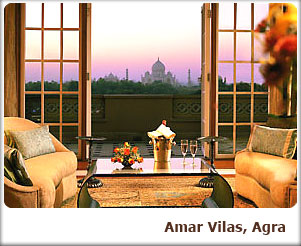 AGRA FORT – ARCHITECTURAL WONDER IN STONE: Within a radius of 3 kilometers, on the banks of the river Yamuna raises the crescent like Agra Fort. Designed and built by Akbar in 1565 A.D., the fort is surrounded by a 70 feet high wall. It houses the beautiful Pearl Mosque and numerous palaces including the Jahangir Mahal, Diwan-i-Khas, Diwan-i-Am and Moti Masjid. Later it was used by his son Jahangir also as the seat of power. Shahjahan modeled his creation, the Red Fort at Delhi on this fort. The Agra fort happens to be on the same bank of the river Yamuna as the Taj Mahal which is visible in all its beauty from one side of the fort. So very ironically, Shahjahan, a prisoner of his son Aurangzeb in his old age was put in a cell from where he could gaze at the Taj Mahal at a distance, from his cell in the Agra Fort.
AGRA FORT – ARCHITECTURAL WONDER IN STONE: Within a radius of 3 kilometers, on the banks of the river Yamuna raises the crescent like Agra Fort. Designed and built by Akbar in 1565 A.D., the fort is surrounded by a 70 feet high wall. It houses the beautiful Pearl Mosque and numerous palaces including the Jahangir Mahal, Diwan-i-Khas, Diwan-i-Am and Moti Masjid. Later it was used by his son Jahangir also as the seat of power. Shahjahan modeled his creation, the Red Fort at Delhi on this fort. The Agra fort happens to be on the same bank of the river Yamuna as the Taj Mahal which is visible in all its beauty from one side of the fort. So very ironically, Shahjahan, a prisoner of his son Aurangzeb in his old age was put in a cell from where he could gaze at the Taj Mahal at a distance, from his cell in the Agra Fort.
The fort has four gates and is enclosed by a double barricaded wall of red sand stone. Many buildings were constructed within the fort of which very few remain till date. One of the most significant ones is the multi storied Jahangir Mahal built by Akbar for his wife Jodha Bai.
The Mahal is reached through an impressive gateway and its inner courtyard consists of beautiful halls, profuse carvings on stone, exquisitely carved heavy brackets, piers and cross beams.
SIKANDRA: Sikandra, 10 Kms North West of Agra, is the final resting place of Emperor Akbar. The Tomb of Akbar shows an interesting fusion of Hindu and Mughal architecture reflecting the spirit of the Mughal Emperor Akbar. Akbar began the construction of his own garden mausoleum during his lifetime, a red sandstone structure in a char-Bagh meaning 4-square formal garden.
ITMAD – UL – DAULAH’A TOMB: This tomb was erected by Nur Jahan in sweet memory of her father Ghiasud-Din-Beg between 1622 - 1628 A.D. This white marble structure of the pre-Taj era though smaller is often considered equal if not better to the great one itself.
Overnight will be at Agra.
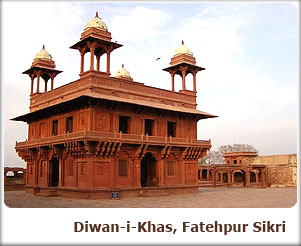 Day 08
Day 08
Agra – Fatehpur Sikri - Jaipur:
By Road 265kms/05hrs
Breakfast will be at hotel.
Drive to Jaipur visiting Fatehpur Sikri enroute.
FATEHPUR SIKRI – THE CITY OF VICTORY: 37 Kms from the city of Agra, stands Fatehpur Sikri, Akbar’s capital. Full credit goes to the Archeological Survey of India for this perfectly preserved example of a Mughal city at the height of the empire’s splendor. It is an attraction no visitor to Agra should miss. This sprawling structure is made of red sandstone and combines both Hindu and Mughal architecture. This walled city contains the mausoleum of the Sufi fakir, Saleem Chisti who is said to have granted Akbar and his Hindu queen Jodhabai their wish for a son. The main entrance to Fatehpur Sikri is through the 175 feet Buland Darwaza, the highest gateway in the world. It was built by Akbar to commemorate his victory over Khandesh in Gujarat.
The Panch Mahal is a five-storeyed tower, the highest point in Fatehpur Sikri. This extremely airy tower is supposed to have been used by one of the emperor's many queens.
After lunch continue drive to beautiful Pink City – Jaipur. Reach and check in at hotel.
Jaipur is the capital of the state of Rajasthan a romantic realm of resplendent palaces, mighty fortresses and regal Maharajahs that lies in the western deserts and is an utterly unique part of India. Proudly belonging to the KSHATRIYA warrior caste and fiercely independent, the Rajput princes made fearsome foes. However, many of them realized that to maintain their wealth and authority locally, it was expedient to proclaim allegiance to the central power. Thus, many enjoyed a privileged position under the Mughal emperors and also the British Raj that followed.
The bustling Rajasthan capital of Jaipur takes its name from its venerated founder Jai Singh II, who was given the title Sawai Maharaja by the Mughal. Literally translated this would mean ’one and a quarter’, suggesting that the Mughal thought this emperor to be more valuable than just ‘one’. Jaipur is known as the ’Pink City’ on account of the distinctive colour of its buildings. This did not, however, form part of the original plan, but dates back to 1856, when the city was given a wash of pink in honor of a State Visit from Prince Albert.
This evening, visit the Birla Temple to learn more about the fascinating religious life of Jaipur. The marble structure, built as recently as 1985, houses ornate statues including one of Lakshmi (goddess of Wealth and Beauty) and Narayan dressed in gaudy robes, representing a Hindu vision of heavenly luxury. Carvings in the temple and on pillars supporting the covered walkways include images of the Hindu pantheon, as well as Jesus, the Blessed Virgin Mary and St Francis of Assisi. Your visit will coincide with the AARTI Ceremony, which involves oil lamps being lit and waved, in order to awake and invoke the deity.
Enjoy the experience and spend night at Jaipur.
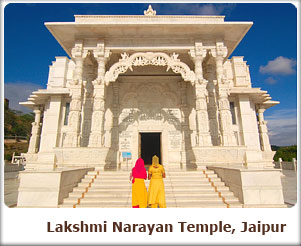 Day 09
Day 09
Jaipur:
After breakfast drive to Amber Palace. Enjoy Elephant Back ascent to the Fort.
AMER PALACE & FORT: Amer Fort and Palace was originally built by Raja Man Singh and subsequently developed by Sawai Jai Singh. The major attractions are Sheela Devi Temple, Sheesh Mahal (Hall of mirrors), Jai Garh Fort a few kilometers from the city centre was built for the defence of the town and has one of the world’s biggest cannons on wheels and a rich collection of arms and weapons.
Continue city sightseeing.
HAWA MAHAL (PALACE OF WINDS): Hawa Mahal is the most strikingly designed monument in Jaipur. Built by the Poet-King Sawai Pratap Singh in 1799, the Hawa Mahal is centrally located and is multiniched five storey high back view of the compled. It was conceived to provide an adequate vantage position behind delicate stone-carved jali, screens for the palace women to watch the royal processions passing through the Bazar below without being seen by outsiders. The Top of the palace affords a beautiful view of the city. A small archaeological museum is yet another attraction in the palace.
JAL MAHAL: The Jal Mahal Palace, Jaipur is noted for its intricate architecture. The Palace was developed as a pleasure spot. It was used for the royal duck shooting parties. On the road to Amber at a distance of 6.5 Kms from Jaipur are the cenotaphs of the royal family. A causeway leads to Jal Mahal Palace situated in the middle of Man Sagar Lake, opposite the cenotaphs. The first four floors of this building is under water, only the top floor remains outside. One can have a wonderful view of the lake and the palace from Nahar Garh Fort Built in 1799, the palace is now abandoned, but reasonably well preserved. In the monsoons, it looks particularly startling with its red sandstone set against the water hyacinth filled lake.
THE CITY PALACE: The city Palace is a historic landmark. The Carved arches are supported by grey-white marble columns studded with floral motifs in gold and colored stones. Two elephants carved in marble, guard the entrance, where retaineers whose families have served generations of the rulers are at hand, to serve as guides.
JANTAR MANTAR Jantar Mantar is one of Sawai Jai Singh’s five remarkable observatories. Constructed with stone and marble its compled instruments, whose setting and shapes are precisely and scientifically designed, represent the high-points of medieval Indian Astronomy. The two Ram Yantras used for gauging altitudes are unique in their isolation. This is the largest of five observatories founded by Sawai Jai Singh-II in various parts of the country.
This evening is free for you to relax shop or explore independently. Shopping is superb in Jaipur, particularly for gold and silver jewellery, pottery, tie-dye materials, silk, saris, wooden handicrafts and carpets.
Overnight will be at Jaipur.
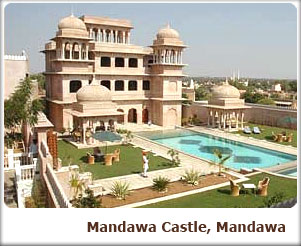 Day 10
Day 10
Jaipur – Mandawa – Bikaner:
By Road 220kms/06hrs
Breakfast will be at the hotel.
Proceed to Bikaner visiting Mandawa enroute.
Mandawa is one of the beautiful historical towns which attract tourists from all over. A few kilometers from Jaipur, Mandawa is one of the sleepy hamlets of Rajasthan that recalls the glory and grandeur of yesteryears.
From grand Forts, Havelis and palatial mansions, Mandawa is truly one of the ideal destinations for the history lovers. From paved archways to mirror works, paintings and murals and exquisitely designed architectural marvels, Mandawa is considered to be an open air art gallery.
The Tourist Attractions in Mandawa are all about these beautiful forts and Havelis. One of the important tourist attractions of Mandawa is the beautiful Mandawa Fort. Constructed in the year 1797, it was built by the Shekhawati ruler, Nawal Singh. Mandawa Fort is truly a class apart in elegance and grandeur. Beautifully painted murals and paintings, arched doorways, pictures depicting mythological characters recreate the quaint medieval ambience. Around this Mandawa Fort the township of Mandawa slowly developed. Today the fort is not only a mere tourist attraction in Mandawa but it has been renovated into one of the heritage hotels of Rajasthan.
Continue drive to Bikaner. Reach Bikaner and check in at hotel.
BIKANER – The royal fortified city with a timeless appeal. Lying in the north of the Desert State, the city is dotted with many sand dunes. Bikaner retains the medieval splendor that pervades the city’s lifestyle.
More popularly called the camel country, the city is renowned for the best riding camels in the world. The ship of the desert is an inseparable part of life here. Be it pulling heavy carts, transporting grains or working on wells, camels are the prime helpers. The wells of Bikaner - an important source of water are other attractions of the city. These are built on high plinths with slender minareted towers on each of the Four Corners and can be noticed even from a distance.
Overnight will be at Bikaner.
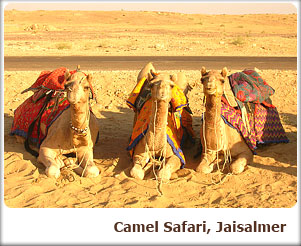 Day 11
Day 11
Bikaner – Jaisalmer:
By Road 330Kms/06hrs
Breakfast will be at hotel. Proceed for sightseeing tour of Bikaner.
Bikaner is a beautiful city in the northwestern part of Rajasthan and is a major tourist attraction of the state. Junagarh Fort, camel breeding farm and camel festival are the major tourist attractions of Bikaner. Besides, there are various other tourist attractions of Bikaner like Lalgarh Palace, Deshnoke temple, Karni Mata etc. that you must visit on your Bikaner Travel. The Rajputana Getaway offers to give you online information on other tourist attractions in Bikaner in Rajasthan, India
KARNI MATA TEMPLE: is also one of the major tourist attractions of Bikaner. The unique thing about the temple is the thousand of rats that come here. The rats are considered holy and are worshipped by the devotees. You are considered lucky if you spot a white rat.
Proceed to Jaisalmer. Reach and check into the hotel.
Jaisalmer, the Golden City of India, is one of the most alluring tourist destinations in Rajasthan, India. Jaisalmer is famous for its magnificent forts, enchanting palaces, havelis (mansions) and century’s old houses. Jaisalmer is also known for its exotic sand dunes and exciting camel safaris. Jaisalmer has a number of exciting tourist attractions showcasing the royal grandeur of the bygone era. The major tourist attractions in Jaisalmer include the Jaisalmer Fort, Patwon-Ki Haveli, Nathmalji-ki-haveli, Salim Singh-Ki Haveli, Tazia tower, Bar Bagh and the beautiful Gadsisar Lake. Its exquisite handicrafts and colorful festivals are other major tourist attractions.
Jaisalmer also offers exciting shopping experience to its visitors. On tours to Jaisalmer, you can shop for embroidered textiles and carpets, woolen pattu, carpets made from camel hair, tapestry, oil lamps, silver jewelry, finely cut antiques, old stonework, trinkets, and other souvenirs and curios.
Overnight will be at Jaisalmer.
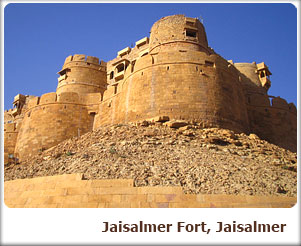 Day 12
Day 12
Jaisalmer:
Enjoy the breakfast at the hotel and proceed for the sightseeing.
JAISALMER FORT: The 12th century Jaisalmer Fort is one of the most formidable forts in Rajasthan, India. Perched on Trikuta hill, Jaisalmer Fort is a 250 ft tall and massive fort surrounded by a 30 ft high sandstone wall with 99 bastions, offering a spectacular sight to visitors. The Fort also houses a Jain Temple.
JAISALMER HAVELIS: Once the residence of wealthy merchants, the havelis (mansions) of Jaisalmer are famous for their artistic designs and decorations. Their exclusive cutwork, yellow and red stone treatment, and the bracket-shaped decoration of peacocks, never fail to mesmerize the visitors. The Patwon-Ki-Haveli, Salim-Singh-Ki-Haveli and Nathmal ji-Ki-Haveli are major tourist attractions in Jaisalmer.
NATHMAL KI HAVELI: Two architect brothers built it in the 19th century. Interestingly, while one concentrated on the right, the other concentrated on the left and the result is a symphony epitomizing the side by side symmetry during construction. Paintings in miniature style monopolize the walls in the interior. Mighty tuskers carved out of yellow sandstone stand guard to the Haveli.
SALIM SINGH KI HAVELI: This Haveli was built about 300 years ago and a part of it is still occupied. Salim Singh was the prime minister when Jaisalmer was the capital of the princely state and his mansion has a beautifully arched roof with superb carved brackets in the form of Peacocks. The mansion is just below the hill and it is said that once it had two additional wooden storeys in an attempt to make it as high as the maharaja's palace, but the maharaja had the upper storey torn down.
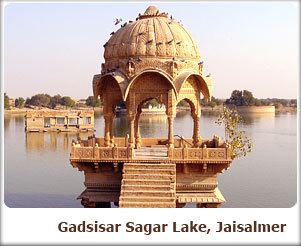 PATWON JI KI HAVELI: This is one of the largest and most elaborate Haveli in Jaisalmer and stands in a narrow lane. It is five storeys high and is extensively carved. It is divided into six apartments, two owned by archaeological Survey of India, two by families who operate craft-shops and two private homes. There are remnants of paintings on some of the inside walls as well as some mirror work.
PATWON JI KI HAVELI: This is one of the largest and most elaborate Haveli in Jaisalmer and stands in a narrow lane. It is five storeys high and is extensively carved. It is divided into six apartments, two owned by archaeological Survey of India, two by families who operate craft-shops and two private homes. There are remnants of paintings on some of the inside walls as well as some mirror work.
GADSISAR SAGAR LAKE: A famous picnic spot in the sandy city, Gadsisar Sagar Lake is among the most beautiful tourist attractions in Jaisalmer. It attracts hundreds of migratory birds during the winter season. Bara Bagh: Located on the bank of Gadsisar Sagar Lake, Bara Bagh is an oasis in the desert. The lush green garden provides much-needed relief to the local people.
TAZIA TOWER: The pagoda like Tazia Tower rises from the Badal Mahal (Palace of Clouds). The beautiful five-tiered tower is known for its beautifully carved balconies on each storey.
JAIN TEMPLES: These fine Jain temples were built in the 12th to 15th century, within the Jaisalmer Fort. They are beautifully carved and dedicated to Rikhabdevji and Sambhavnathji. The Gyan Bhandar, a library containing some extremely old manuscripts, is within the temple complex.
In the late afternoon, proceed to the SAND DUNES for visiting the typical Rajasthani Desert Village. View the sunset from the dunes, as the sky is set on fire. Return to the village for dinner amidst Rajasthani musicians playing haunting tunes.
Overnight will be at Jaisalmer.
Day 13
Jaisalmer – Osiyan - Jodhpur:
By Road 300Kms/06hrs
Breakfast will be at hotel.
Proceed to Jodhpur visiting Osiyan enroute.
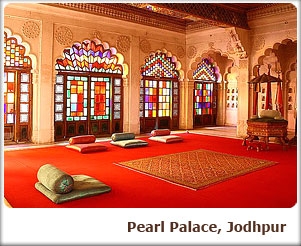 OSSIAN: Ossian, known as Ukeshpur in ancient time, is a land of temples. It was a Brahminical centre & later, Jainism also flourished here as is evident from the remnants of medieval temples. The Oswal trace their origin from this place. Ossian is a major site, containing monuments spanning five centuries of artistic evolution. There are several beautiful temples and shrines, oldest amongst them being the Sun temple. The doorway to this temple is one of the finest to be seen anywhere in India. The Harihara I temple, dating back to 750 A.D., is a 'panchayatan' temple, which means that a central shrine is surrounded by four other smaller ones. It stands on a beautifully decorated terrace with thirteen niches built into its sides. The main temple carries some excellent early figural sculptures including the Krishna Leela frieze. The Harihara III temple was built around 800 A.D. the walls of its rectangular sanctum carry exuberant decoration, tastefully executed. There is an open hall, the aisles of which have been provided with a beautiful sloping ceiling supported by rafters, shaped like 'nagas'. Harihara III is one of the finest examples in India of exuberance going hand in hand with architectural strength. Harihara II adjoining Harihara III is a somewhat less well-finished copy of Harihara I. Apart from this there is the main Sun Temples such as Mahavira temple, Vishnu temples III, IV, V, which are also worth seeing for their ancient architectural beauty. A unique feature of these temples is that most of them face the west.
OSSIAN: Ossian, known as Ukeshpur in ancient time, is a land of temples. It was a Brahminical centre & later, Jainism also flourished here as is evident from the remnants of medieval temples. The Oswal trace their origin from this place. Ossian is a major site, containing monuments spanning five centuries of artistic evolution. There are several beautiful temples and shrines, oldest amongst them being the Sun temple. The doorway to this temple is one of the finest to be seen anywhere in India. The Harihara I temple, dating back to 750 A.D., is a 'panchayatan' temple, which means that a central shrine is surrounded by four other smaller ones. It stands on a beautifully decorated terrace with thirteen niches built into its sides. The main temple carries some excellent early figural sculptures including the Krishna Leela frieze. The Harihara III temple was built around 800 A.D. the walls of its rectangular sanctum carry exuberant decoration, tastefully executed. There is an open hall, the aisles of which have been provided with a beautiful sloping ceiling supported by rafters, shaped like 'nagas'. Harihara III is one of the finest examples in India of exuberance going hand in hand with architectural strength. Harihara II adjoining Harihara III is a somewhat less well-finished copy of Harihara I. Apart from this there is the main Sun Temples such as Mahavira temple, Vishnu temples III, IV, V, which are also worth seeing for their ancient architectural beauty. A unique feature of these temples is that most of them face the west.
Continue drive to Jodhpur. Reach Jodhpur and check into hotel.
Set at the edge of the THAR Desert, the imperial city of Jodhpur echoes with tales of antiquity in the emptiness of the desert. Once the capital of the Marwar state, it was founded in 1459 AD by Rao Jodha-chief of the RATHORE clan of Rajputs who claimed to be descendants of Rama - the epic hero of the RAMAYANA. The massive 15th century AD Mehrangarh Fort looms on the top of a rocky hill, soaring 125 Mts. Above the plains. The city is encompassed by a high wall -10 km long with 8 gates and innumerable bastions.
Overnight will be at Jodhpur.
Day 14
Jodhpur
Breakfast will be at the hotel.
Proceed for the sightseeing.
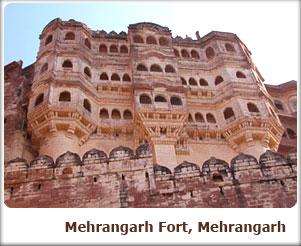 MEHRANGARH FORT: This fort is one of the largest forts in India. The fort is situated at an altitude of about 125 metres and is spread over an area of 5 sq km, with seven gates. It has been a witness to the splendor of bygone era. The beauty and the grandeur of numerous places in the fort narrate a saga of hard sandstones yielding to the chisels of skilled Jodhpur sculptures. Mehrangarh literally means "Majestic Fort". It is located at very center of the city and is visible surrounding from the city. Originally built in 1806 the fort has been added to many times since. The palaces in this fort were built in an informal pattern over several centuries. They have their own peculiar style, with narrow staircases, serving as the only means of access to the royal residences within. A collection of musical instruments, palanquins, furniture and cannons on the fort's ramparts are well - preserved.
MEHRANGARH FORT: This fort is one of the largest forts in India. The fort is situated at an altitude of about 125 metres and is spread over an area of 5 sq km, with seven gates. It has been a witness to the splendor of bygone era. The beauty and the grandeur of numerous places in the fort narrate a saga of hard sandstones yielding to the chisels of skilled Jodhpur sculptures. Mehrangarh literally means "Majestic Fort". It is located at very center of the city and is visible surrounding from the city. Originally built in 1806 the fort has been added to many times since. The palaces in this fort were built in an informal pattern over several centuries. They have their own peculiar style, with narrow staircases, serving as the only means of access to the royal residences within. A collection of musical instruments, palanquins, furniture and cannons on the fort's ramparts are well - preserved.
JASWANT THADA: Close to the fort complex lies white marble cenotaph, built in 1899 in commemoration of Maharaja Jaswant Singh II rare portraits of Jodhpur rulers are also to be seen at Jaswant Thada. A visit inside the cenotaphs, with some villagers of the region, would bring forward the reverence they still hold for their brave kings.
Visit UMAID BHAWAN PALACE: The romantic looking Umaid Bhawan Palace was actually built with the purpose of giving employment to the people of Jodhpur during a long drawn famine. The royal family of Jodhpur still lives in a part of the palace. Another part of the palace houses a well-maintained museum, displaying an amazing array of items belonging to the Maharaja and the royal family - weapons, antiques & fascinating clocks, crockery and trophies
Overnight will be at Jodhpur.
Day 15
Jodhpur – Ranakpur - Udaipur:
By Road 250km/05hrs
Breakfast will be at the hotel.
Start for Udaipur visiting Ranakpur enroute.
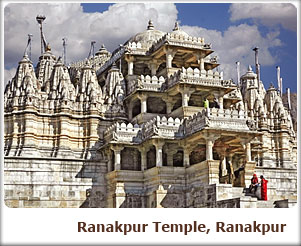 En-route, visit the RANAKPUR TEMPLES, dating back to the 15th century. 200 pillars, none of which are alike, support its 29 halls. The Temple abounds with intricate friezes and sculptures. Includes visits to two more Jain temples and the Temple of the Sun God with its erotic sculptures.
En-route, visit the RANAKPUR TEMPLES, dating back to the 15th century. 200 pillars, none of which are alike, support its 29 halls. The Temple abounds with intricate friezes and sculptures. Includes visits to two more Jain temples and the Temple of the Sun God with its erotic sculptures.
Reach and check in at hotel.
Udaipur is the jewel of MEWAR -a kingdom ruled by the Sisodia dynasty for 1200 Years. The city of Dawn, Udaipur is a lovely land around the azure lake, hemmed in by the lush hills of the ARAVALLIS. A vision in white drenched in romance and beauty, Udaipur is a fascinating blend of sights, sound and experiences and inspiration for the imagination of poets, painters and writers.
Its kaleidoscope of fairy-tale palaces, lakes, temples, gardens and narrow lanes strewn with stalls, carry the flavor of a heroic past, epitomizing valor and chivalry. Their reflection in the placid waters of the LAKE PICHOLA is an enticing sight.
Overnight will be at Udaipur.
Day 16
Udaipur
Breakfast will be at hotel.
Proceed for sightseeing tour of Udaipur, stopping first at City Palace.
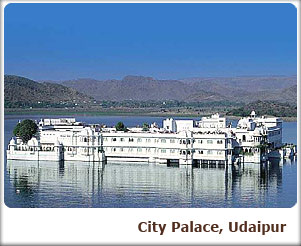 CITY PALACE: Udaipur’s fascinating City Palace is the largest royal complex in Rajasthan. Standing on a rocky promontory the palace has balconies, towers and cupolas and presents a wonderful view of the lake and the city. The complex has eleven constituent Mahals (palaces), constructed by successive maharanas during the three hundred years that followed the foundation of Udaipur in 1559. Added to this, Crystal Gallery and Durbar Hall within the complex is spectacular. Explore them for their mosaics, miniatures, mirror work and motifs.
CITY PALACE: Udaipur’s fascinating City Palace is the largest royal complex in Rajasthan. Standing on a rocky promontory the palace has balconies, towers and cupolas and presents a wonderful view of the lake and the city. The complex has eleven constituent Mahals (palaces), constructed by successive maharanas during the three hundred years that followed the foundation of Udaipur in 1559. Added to this, Crystal Gallery and Durbar Hall within the complex is spectacular. Explore them for their mosaics, miniatures, mirror work and motifs.
Here you will marvel at rooms with mirrored walls and ivory doors, colored glass windows and inlaid marble balconies and the Peacock Courtyard.
SAHELION KI BARI: The "garden of the maids of honour", Sahelion-ki-Bari was designed and laid out early in the eighteenth century as a retreat for ladies of the royal household to spend their time in leisure. The lotus pool, fountains, lawns, flowerbeds, and marble pavilions all combine to make it a captivating place.
BAGORE KI HAVELI: Situated on the picturesque bank of Pichola Lake, This Haveli was built by Shri Amarchand Badwa, who was the Prime Minister of Mewar-the rulers of Mewar Pratap Singh, Maharana Ari Singh, and Maharana Hamir Singh during the period 1751 to 1778. This palatial building reportedly has 138 rooms, balconies, terraces, courtyards and corridors. The glass and mirror inlay within the Haveli is Unique and procured in its original form. The two peacocks made with small pieces of colored glasses are unique reflection of the finest craftsmanship of glass work. What was once upon a time a living centre of nobility of Udaipur lay in darkness and ruin for nearly half a century till when it was handed over to the West Zone Cultural Centre (WZCC) in 1986.
JAGDISH TEMPLE: Built in 1651 A.D. by Maharana Jagat Singh, this Indo-Aryan temple is dedicated to Lord Jagannath, a manifestation of Vishnu. The largest and the most beautiful temple of Udaipur, it is always seething with constant activity and noted for its beautiful sculpted images and towering Shikhara.
FATEH SAGAR: West of Sahelion-ki-Bari is Fateh Sagar, a lake built by Maharana Fateh Singh. It is bordered by sharp hills and a canal built at the beginning of the twentieth century connects it to the Lake Pichola. In the middle of the lake is Nehru Park, a popular garden island with a boat-shaped cafe.
BHARATIYA LOK KALA MANDIR: Bharatiya Lok Kala Mandir is home to an attractive collection of folk dresses, puppets, ornaments, dolls, masks, folk musical instruments, folk deities and paintings. The museum is the best place for those interested in puppetry. Short amusing puppet shows are staged throughout the day. In addition, the museum runs short courses in puppet making and theatre.
Proceed for Evening Motor launch cruise on the placid waters of Lake Pichola. From the boat you will be able to view the city of Udaipur as it rises majestically above the lake in the middle of the Rajasthan desert. Also visit the Jag Mandir Palace - the other island palace in the middle of the lake. Spend some time at the Jag Mandir Palace.
JAG MANDIR: Jag Mandir, another island palace in the Lake Pichola was built by Karan Singh in 1615. It derives its name from Jagat Singh who added to the initial structure. It was never used for the purpose for it was built. This palace was used to provide shelter to the Mughal prince Khurum (later Emperor Shah Jahan) who rebelled against his emperor father Jahangir, in the 1620s. Jahangir was succeeded by Shah Jahan who was still in Udaipur at the time of his father's death. During the 1857 Mutiny this island palace once again served as a safe haven for European women and children.
Overnight will be at Udaipur.
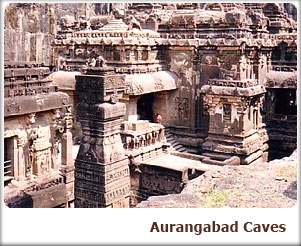 Day 17
Day 17
Udaipur – Mumbai – Aurangabad:
By Air
Breakfast will be at hotel.
Transfer to the airport to take flight for Mumbai. Reach Mumbai and take connecting flight for Aurangabad. Reach and check into the hotel.
The city of Aurangabad was founded in 1610, on the site of a village, Khirki by Malik Ambar - the Prime Minister of Murtaza Nizam Shah II. When Fateh Khan, Malik Ambar's son turned successor in 1626, he gave the city the name 'Fatehpur'. Later in 1653, when Prince Aurangzeb became Viceroy of the Deccan, he made the city his capital and called it Aurangabad. Aurangzeb added the walls that enclose the central part of the city in 1686 in order to withstand attacks from the Marathas. There are four principle gateways to the city - the Delhi Darwaza, the Jalna Darwaza, the Paithan Darwaza and the Mecca Darwaza. Nine secondary gateways also formed a part of the defensive system of this city.
Aurangabad district has always been a prominent region on the Deccan plateau. Having been inhabited since the Stone Age, it has a long artistic and cultural history - to which several dynasties have made major contributions over the years. Maurya rule marked the arrival of Buddhism in Maharashtra.
Aurangabad today is a bustling city of Maharashtra with diverse big and small industries, fine silken textiles, and exquisite hand woven brocades of silver and gold fabrics, Himroo of world frame. To scholars and lovers of art and culture the city is more familiar as the gateway to the ancient caves of Ajanta and Ellora, both famous as treasure houses of Indian Art and Sculpture.
Overnight will be at Aurangabad.
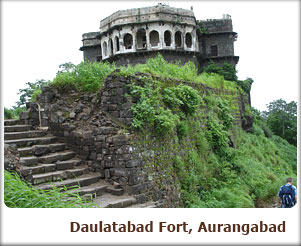 Day 18
Day 18
Aurangabad:
Breakfast will be served at the hotel.
Proceed for the excursion to Ajanta Caves.
Ajanta caves: Nestling in an inner fold of the Sahyardi hills, 100 km from Aurangabad in the shape of a mammoth horse- shoe, are the 30 rock-hewn caves of Ajanta. The Caves date from the 2nd century BC. Discovered in 1819 by a group of British army officers, these startling achievements took around 600 years to create. Carved with little more than a hammer and chisel, Ajanta, once the retreat of Buddhist monastic orders features several 'chaityas' (chapels) and 'viharas' (monasteries). The exquisite wall and ceiling paintings, panels and sculptures of Buddha's life are famous throughout the world as the earliest and finest examples of Buddhist pictorial art.
Return to Aurangabad and visit the Daulatabad Fort.
Once known as 'Devgiri', this magnificent 12th century fortress stands on a hill just 13 km. from Aurangabad. It was given the name Daulatabad, the 'city of fortune', by Muhammad Tughlaq, Sultan of Delhi. Initially a Yadav stronghold, it passed through the hands of several dynasties in the Deccan. One of the world's best preserved fort of medieval times, surviving virtually unaltered, Daulatabad yet displays the character that made it invincible. This is a Fortress that was conquered only by treachery. A series of secret, quizzical, subterranean passages lie coiled like a python amidst the fort. Here flaring torches were thrust upon an unwary enemy. Or hot oil poured down his path, as he deliberated in the labyrinth. Also the heat from a brazier was blown into the passage by a process of suction suffocating the entire garrison within. The Fort itself lies in the body of an isolated hill; the steep hill - sides at the base falling so sharply to the moat that no hostile troops could scale the height. The moat, 40 ft. deep with mechanical drawbridges teemed with crocodiles. A 5-kilometer sturdy wall, artificial scarping and a complicated series of defenses made Daulatabad impregnable. The 30-meter high Chand Minar (Tower) built much later with 3 circular galleries had a defensive and religious role in the fortress.
Overnight will be at Aurangabad.
Day 19
Aurangabad – Mumbai:
By Air
Breakfast will be at the hotel.
Proceed for a visit to the Ellora and Aurangabad Caves.
Ellora Caves: Impressive in their own right is the rock-hewn temples and monasteries of Ellora that lie just 30 km away from Aurangabad city. In all, there are 34 cave temples, 12 Mahayana Buddhist caves (550-750 AD), 17 Hindu caves (600-875 AD) and 5 caves of the Jain faith (800-1000 AD) 22 more caves, dedicated to Lord Shiva, were recently discovered. Kailas Temple (cave16), the central attraction at Ellora, is the most remarkable. Chiseled by hand from a single massive rock, it includes a gateway, pavilion, courtyard, vestibule, sanctum, sanctorum and tower which bear testimony to the excellence of Dravidian art. It is believed to have taken 7000 laborers, working in continuous shifts and 150 years to build. Ever since the first European visitors in 18th Century, Ellora has attracted chroniclers, antiquarians, scholars and in more recent years, ever- increasing number of tourists.
Aurangabad Caves: The almost forgotten caves of Aurangabad lie just outside the city. Excavated between the 2nd and 6th century AD, they reflect TANTRIC influences in their iconography and architectural designs. In all there are nine caves which are mainly viharas (monasteries). The most interesting among these are Caves 3 and 7. The former is supported on 12 highly ornate columns and has sculptures depicting scenes from the legendary 'Jakata' tales. Cave 7 with its detailed figures of bejeweled women also has a dominating sculpture of a 'Bodhisattva' praying for deliverance.
Proceed to the airport for flight to Mumbai. Reach and check into the hotel.
Its young, its lively and a confluence of varied cultural currents and cross currents have given Mumbai a unique position of the most multi-ethnic city of India. The capital city of Maharashtra State formerly known as Bombay lies in the southwestern part of India and occupies a peninsular site originally composed of seven islets lying off the KONKAN COAST of western India. Oozing with the cocksure self-confidence of a maverick moneymaker and "Bindass" (carefree) attitude, Mumbai is also country's financial and commercial hub and has a principal port on the Arabian Sea.
Yet, there's another face of Mumbai too that is of the most densely populated cities in the world. Mumbai is located on a site of ancient settlement and took its name from the local Goddess "Mumba" - a form of Parvati, the consort of Shiva, one of the principal Gods of Hinduism – whose temple once stood in what is now the southeastern section of the Mumbai city.
Overnight will be at Mumbai.
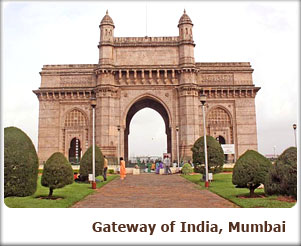 Day 20
Day 20
Mumbai:
Proceed for a city tour of Mumbai after a relaxed breakfast.
Mumbai Fort: The area north of Colaba is known as Mumbai Fort, since the old British fort was once located here. There are a lot of impressive buildings from Mumbai's golden period here. St. John's church, dedicated to the soldiers, who laid down their lives in the Sindh campaign of 1838, and the first Afghan war of 1843, is also worth a visit.
Marine Drive in Mumbai: Marine Drive located in the central Mumbai, built in the 1920s and 30s on land reclaimed from the sea, is Mumbai's most famous thoroughfare. It is also referred to as the Queen's Necklace because of the dramatic line of street lamps lit up at night. Recently it has come to known as Netaji Subhashchandra Bose Road with Nariman Point on one end to Babulnath, at the foot of Walkeshwar on the other.
Gateway of India: Mumbai's principal landmark, the Gateway of India is a huge archway on the water's edge at Apollo Bunder. It is the starting point for most tourists who want to explore the city. This famous monument was built to commemorate the visit of the first ever British Monarch, King George V and Queen Mary in 1911.
Flora Fountain/ Hutama Chowk: This fountain situated in the heart of the city was erected in 1869 in honor of a British Governor of Bombay. Sir Brtle Frere. Flora Fountain marks a junction of five streets and known as the 'Picadilly Circus 'of Mumbai, which is decorated at its four corners with mythological figures, the Fountain is a structure in dull stone with a figure the Roman Goddess of flowers, at the top.
Hanging Gardens in Mumbai: Also known as Pherozeshah Mehta Gardens, the Hanging Gardens were built in 1880 and renovated in 1921. These gardens are popularly known as Hanging Gardens, because of their location on the slope of a hill. The terrace garden looks south from Malabar Hill towards Colaba, and affords a panoramic view of the city or a breathtaking sunset. It is built over three reservoirs, which store 30 million gallons of water pumped here for cleaning before being supplied to the town.
In the evening enjoy the beach close to the hotel.
Chowpatty Beach: Chowpatty beach situated at the end of Marine Drive has a moderate expanse of sand and is the only beach in the central part of Mumbai. One can witnesses many Hindu religious ceremonies taking place at Chowpatty like the Annual Thread-Tying Ceremony initiating young boys into the Brahmin caste, 'Nariel Purnima' towards the end of the monsoons and 'Ganesh Chaturthi' immersions.
Overnight will be in Mumbai.
Day 21
Mumbai – Home:
Morning enjoy the breakfast.
Enjoy shopping during the day.
As per your INTERNATIONAL FLIGHT TIMINGS you’ll be transferred to the airport to take your flight back home with sweet memories of CLASSICAL INDIA WITH RAJASTHAN & CAVES TOUR
...........................................................................TOUR ENDS...........................................................................
INCLUSIONS:
Delhi Arrival:
COMPANY REPRESENTATIVE will receive you on arrival at the DELHI AIRPORT and transfer to your hotel.
DELHI, the capital of kingdoms and empires is now a sprawling metropolis with a fascinating blend of the past and the present. It is a perfect introduction to the composite culture of an ancient land. A window to the kaleidoscope - that is India.
Overnight will be at Delhi.
 Day 02
Day 02 Delhi:
After breakfast proceed for a day sightseeing tour of the city.
The city is dotted with historic monuments that are the most popular tourist attractions in Delhi. Apart from the monuments, there are museums, markets, gardens and eating joints that you can visit on your tour of Delhi. Some of the important sightseeing places in Delhi are given below.
INDIA GATE: It is the war memorial dedicated to Indian soldiers, who died during World War I. The name of many soldiers who died during World War I is inscribed on its wall. Edward Lutyens, the man who planned and built New Delhi, designed India Gate. Almost every foreign tourist visits the monument. 'Amar Jawan Jyoti', the eternal flame is added later. The eternal flame runs on gas and is a tribute to soldiers who lost their lives in the service of the nation.
RED FORT: Located in Old Delhi, the Red Fort or Lal Quila is a popular tourist attraction in Delhi. The fort was built by the Mughal emperor Shah Jahan in 1648, when he moved his capital from Agra to Delhi. The construction of the Fort started in 1638 and it was completed 10 years later in 1648. Some of the important spots inside the Red Fort include royal baths or Shahi hamams, Shahi Burj, Moti Masjid or the Pearl Mosque, Diwan-e-Aam and Diwan-e-Khas.
JAMA MASJID: The largest mosque in India, the Jama Masjid was built by Shah Jahan 1656 AD. About 5,000 laborers and craftsmen worked for six years to complete the monument. The mosque can accommodate about 25,000 people. The mosque is located in the old Delhi. The domes are built in white marble. The prayer hall of the mosque has 260 pillars.
OLD FORT: Old Fort or Purana Quila as it is called is located near Pragati Maidan on the Mathura Road. You can club a visit to the Old Fort with your tour of Red Fort and Jama Masjid as the three monuments are located in Old Delhi and are not too far from one another. Humanyun’s started the construction of the fort in 1533 AD, but before the completion of the fort, Sher Shah Suri defeated him and captured Delhi. Sher Shah Suri completed the fort and named it -Shergah. He added many structures to the fort, of which Qila-I-Kuhna Mosque and Sher Mandal are worth mentioning. In 1555, Humanyun’s re-captured Delhi and converted Sher Mandal into a library.
HUMANYUN’S TOMB: Humanyun’s Tomb is mausoleum of the Mughal emperor Humanyun’s. Bega Begum also known as Haji Begum, wife of Humayun constructed the mausoleum for her husband. The tomb was built between 1562 and 1572 AD. The tomb was designed by Mirak Mirza Ghiyuth.
QUTAB MINAR: The construction of the Qutab Minar was stated by Qutub-ud-din Aibak in 1199 AD but he died before completing it. His son-in-law and successor Iltutmish completed the construction of the building. Qutab Minar is located in Meharauli.
LOTUS TEMPLE: Also known as the Bahai Temple, the monument was opened to public only in 1986. Located near Nehru Place, the Lotus Temple is designed like a lotus flower. If you are looking for some moments of peace and tranquility in the crowded city, Lotus Temple is the ideal place to visit.
Apart from the above-mentioned sightseeing options, there are various other tourist attractions that you can visit on your tour of Delhi. Some other sightseeing places in Delhi include Lodi Gardens, National Museum, Jantar Mantar, Dilli Haat and the Garden of Five Senses.
Overnight will be at Delhi.
 Day 03
Day 03 Delhi – Varanasi:
By Air
Breakfast will be at hotel.
Transfer in time to airport for flight to Varanasi. Upon arrival at Varanasi, you will be met and transferred to hotel.
Picturesquely situated on the crescent shaped left bank of the holy River Ganges, Varanasi, one of the ancient seats of learning in India, is said to be a compound of the names of two streams, the Varuna and the Assi, which still flow in the north and south of the city respectively. This name seems to have been corrupted, in medieval times to Varanasi, which was in use till May 1956, when it was changed to Varanasi, by an order of the Government of India. Varanasi is probably one of the most ancient living cities in India. From time immemorial it has been a great religious center for Hindus and one of their most sacred places of pilgrimage, being visited by millions of people every year. To every visitor Varanasi offers a breathtaking experience. The rays of the dawn shimmering across the Ganges; the high-banks; the temples and shrines along the banks bathed in a golden hue …soul stirring hymns and mantras along with the fragrance of incense filling the air…and the refreshing dip in the holy waters gently splashing at the Ghats. Varanasi – The land where experience and discovery reach the ultimate bliss. Varanasi is also renowned for its rich tapestry of music, arts, crafts and education. Some of the world – renowned exponents India has produced in these fields were schooled in Varanasi’s cultural ethos. Luminaries apart, Varanasi abounds in the art of silk weaving, an exotic work of art which manifests itself in precious Banarasi silk sarees and silk brocades which are cherished as collector’s items across the world today.
Enjoy the evening AARTI at the GHATS. The guide will be giving a commentary to you on the proceedings and meanings of the chants during the AARTI of the river.
Later spend the evening shopping in the lanes of Varanasi.
Overnight will be at Varanasi.
 Day 04
Day 04 Varanasi:
Proceed in the morning to Daswamedh Ghat and take a boat ride on the sacred river Ganges to see the cremation Ghats and witness the living traditions of one of the world's oldest and most important religions.
Cruise the Ganges. Perhaps the best way to enjoy the site of Varanasi’s Ghats is a cruise along the river at dawn. Hundreds of bathers, worshippers performing religious rites, holy men practicing yoga and people washing clothes gather at the river’s banks. (To start at 0500 hrs. for the best lifetime experience) For you to appreciate this remarkable city, we’ll transfer you to the banks of the River Ganges before the sun rises. Board a boat with your guide and proceed to the middle of the river, where at sunrise the sight unfolds before you. Thousands of faithful come daily to the banks to bathe and pray while in the background, temples and palaces rise in tiers from the water’s edge. Return for a walk through the cobblestone streets along the banks of "Ganga". As shops are opening, the place now becomes a beehive of activity as the faithful are coming and going.
Return to hotel for a sumptuous breakfast.
Proceed for the sightseeing.
Bharat Mata Mandir: Bharat Mata Mandir or Bharat Mata Temple is one of its kinds in Varanasi. Contrary to what most of the tourists believe, this temple is not dedicated to any God, Goddess or certain deity for that matter. It is dedicated to the human manifestation of India popularly called Mother India or Bharat Mata in Hindi. The temple was inaugurated by non other than Mahatma Gandhi, The father of the Indian Nation.
Banaras Hindu University: BHU was built in the year 1916-1917 under the special act of parliament passed in the year 1915 named BHU act. The act was passed by the interim parliament that worked under the imperial British government. Mahamna Pundit Madan Mohan Malaviya and Annie Besant did the conceptualization and implementation of this university. Raja of Kashi donated 1350 acres of land for the construction of the sprawling campus.
Durga Mandir: Goddess Durga is a significant manifestation of Parvati, the consort of Lord Shiva. In fact she is said to be Shakti, or the manifestation of Parvati that signifies the female element of Power and harmony in nature. This is precisely because a Bengali Maharani built this temple in the 18th century.
Kashi Vishwanath Mandir: The Vishwanath temple is synonymous to Varanasi. Vishwanath Temple is the most sacred and the most famous temple in Varanasi. In fact, Vishwanath Temple is extremely popular in other parts of India too. A considerable chunk of foreign visitors in India come to Varanasi every year to get a glimpse of the Vishwanath Temple even though the followers of Semitic religions are not allowed to enter the sanctum of the temple.
 Tulsi Manas Mandir: Tulsi Manas Temple has a very historical as well as cultural importance for not only Varanasi but also for the whole of India. This is because Ramayana was composed at this very place. Goswami Tulsi Das was the man who composed Ramayana in Hindi in the form of "Ram Charit Manas".
Tulsi Manas Mandir: Tulsi Manas Temple has a very historical as well as cultural importance for not only Varanasi but also for the whole of India. This is because Ramayana was composed at this very place. Goswami Tulsi Das was the man who composed Ramayana in Hindi in the form of "Ram Charit Manas". Visit Sarnath ‑ 5 miles out of Varanasi: The great Buddha enhanced the sanctity of Varanasi by choosing the environs of the city to preach his first sermon at Sarnath, (only 10 Kms away) after attaining enlightenment. Later, Ashoka, the great Mauryan Emperor erected magnificent stupas and other buildings along with his mighty stone pillar, Dharmarajika Stupa. The 110 ft. tall Damekh Stupa marks the place where Buddha preached first sermon. Sarnath has been a premier centre for Buddhism. It is a rich collection of ancient Buddhist relics and antiques comprising numerous Buddha and Bodhisatva images on display at the Archaeological Museum (1000 hrs to 1700 hrs. Open all days except Friday)
Overnight will be at Varanasi.
Day 05
Varanasi – Khajuraho:
By Air
Breakfast will be at the hotel.
Proceed to the airport for flight to Khajuraho. Reach and check into the hotel.
 Khajuraho, which has lent its name to a complex of exquisite Hindu and Jain temples, is a small town located amidst the forested plains of Bundelkhand in north-central Madhya Pradesh. The beautiful temples that dot Khajuraho are believed to have been built by the mighty Chandela rulers in the 9th and 10th century AD. The engravings on these temples are highly sensual and erotic that depicts in graceful forms intimate scenes of the whole range of human emotions and relationships. These sculptures congeal in stone a lyrical paean to love and passion and reflect the Chandela dynasty/’s immense appreciation for art.
Khajuraho, which has lent its name to a complex of exquisite Hindu and Jain temples, is a small town located amidst the forested plains of Bundelkhand in north-central Madhya Pradesh. The beautiful temples that dot Khajuraho are believed to have been built by the mighty Chandela rulers in the 9th and 10th century AD. The engravings on these temples are highly sensual and erotic that depicts in graceful forms intimate scenes of the whole range of human emotions and relationships. These sculptures congeal in stone a lyrical paean to love and passion and reflect the Chandela dynasty/’s immense appreciation for art.Architecturally, the temples are built in the north Indian Nagara style. The sculptor/’s fine skill and a sense of imagination have given form to human emotion in the form of spiritual and physical love. Every façade—wall, window, pillar, and ceiling—is carved with figures of mythical and historical origins, and while many of these depict full-breasted, girdle-waisted women in forms of innocent play, they also depict carnal love.
Khajuraho combines history, architecture, culture and environment with delectable charm. It is a town that takes you away from the noise and pollution of the city, with its fresh air and scenic countryside. For convenience, the temples of Khajuraho are divided into the Western, Eastern, and Southern groups. The Western Group, situated opposite the Government of India Tourist Office, has 14 temples. The Chaunsath Yogini, Lalguan Mahadev, Parvati, Varaha, Matangesvara, Lakshmana, Vishvanath and Nandi, Chitragupta, Devi Jagdamba and Kandariya Mahadeo temples belong to this group. The Eastern Group, 2.4 km from the Tourist Office, consists of seven temples (four Jain and three Hindu). The Parsvanath, Adinath, Shantinath, and Ghantai temples belong to the Jains while the Vamana, Javari and Brahma are Hindu temples. The Southern Group, about 5 km from Khajuraho, contains the Chaturbhuj and Duladeo temples.
Visit the WESTERN SET OF TEMPLES.
Enjoy the Light and Sound show in the evening.
Overnight will be at Khajuraho.
 Day 06
Day 06 Khajuraho – Orchha - Jhansi;
By Road 175Kms/04hrs
Jhansi – Agra
By Deluxe train
Enjoy breakfast at the hotel.
Visit the EASTERN SET OF TEMPLES.
Drive to Jhansi railway station visiting Orchha enroute.
ORCHHA - The grandeur and opulence of the former Bundela dynasty is well reflected in Orchha set amidst the flat Bundelkhand countryside. Built by Raja Rudra Pratap on an artificial island on Betwa river, Orchha (17 Km from Jhansi) takes you back to a royal era when Bundela rulers enjoyed the finer things of life cocooned in the comforts of their citadel. Orchha is a photographer's delight. With its forts, regal palaces, striking temples and chattris, it narrates a beautiful medieval tale.
Transfer to JHANSI station after early lunch for SUPERFAST SHATABDI EXPRESS to Agra. Reach Agra at 2000 hr. Reach and check in at hotel.
AGRA: Two great Mughal monarchs, Akbar and Shah Jahan, transformed the little village of Agra into a befitting second capital of the Mughal Empire – giving it the name Dar-ul-Khilafat {seat of the Emperor}. Today a visitor to Agra is caught up in a world of contrasting edifices, of red sandstone and white marble, narrow galleys and quaint buggies, and that irresistible charm that this favorite city of the Mughals still retains. It is not surprising, that modern Agra still reflects its Mughal heritage most conspicuously. A walk down the narrow bustling streets of the city will introduce the visitor to the wafting aroma of Mughlai cuisine.
Overnight stay will be at Agra.
Day 07
Agra:
After breakfast proceed for day sightseeing of Agra.
THE TAJ MAHAL – AN EMPEROR’S LAMENT: Agra is the city of the Taj Mahal. It is a sublime experience of the greatest love story ever told. Today India's most fascinating and beautiful masterpiece, this perfectly symmetrical edifice is set amidst landscaped gardens on the banks of the Yamuna River. The Taj was built by the Mughal Emperor Shahjahan as a memorial to his wife, Mumtaz Mahal. After her untimely death, Shah Jahan had her mortal remains buried in this mausoleum. And after his own demise he was placed to rest next to his beloved queen in the same mausoleum. Under the dome, below the ground level, in a dimly lit chamber, lie the mortal remains of Shahjahan and his beloved queen Mumtaz, reminding the world of their undying love. The Taj remains closed for visitors on Friday
 AGRA FORT – ARCHITECTURAL WONDER IN STONE: Within a radius of 3 kilometers, on the banks of the river Yamuna raises the crescent like Agra Fort. Designed and built by Akbar in 1565 A.D., the fort is surrounded by a 70 feet high wall. It houses the beautiful Pearl Mosque and numerous palaces including the Jahangir Mahal, Diwan-i-Khas, Diwan-i-Am and Moti Masjid. Later it was used by his son Jahangir also as the seat of power. Shahjahan modeled his creation, the Red Fort at Delhi on this fort. The Agra fort happens to be on the same bank of the river Yamuna as the Taj Mahal which is visible in all its beauty from one side of the fort. So very ironically, Shahjahan, a prisoner of his son Aurangzeb in his old age was put in a cell from where he could gaze at the Taj Mahal at a distance, from his cell in the Agra Fort.
AGRA FORT – ARCHITECTURAL WONDER IN STONE: Within a radius of 3 kilometers, on the banks of the river Yamuna raises the crescent like Agra Fort. Designed and built by Akbar in 1565 A.D., the fort is surrounded by a 70 feet high wall. It houses the beautiful Pearl Mosque and numerous palaces including the Jahangir Mahal, Diwan-i-Khas, Diwan-i-Am and Moti Masjid. Later it was used by his son Jahangir also as the seat of power. Shahjahan modeled his creation, the Red Fort at Delhi on this fort. The Agra fort happens to be on the same bank of the river Yamuna as the Taj Mahal which is visible in all its beauty from one side of the fort. So very ironically, Shahjahan, a prisoner of his son Aurangzeb in his old age was put in a cell from where he could gaze at the Taj Mahal at a distance, from his cell in the Agra Fort. The fort has four gates and is enclosed by a double barricaded wall of red sand stone. Many buildings were constructed within the fort of which very few remain till date. One of the most significant ones is the multi storied Jahangir Mahal built by Akbar for his wife Jodha Bai.
The Mahal is reached through an impressive gateway and its inner courtyard consists of beautiful halls, profuse carvings on stone, exquisitely carved heavy brackets, piers and cross beams.
SIKANDRA: Sikandra, 10 Kms North West of Agra, is the final resting place of Emperor Akbar. The Tomb of Akbar shows an interesting fusion of Hindu and Mughal architecture reflecting the spirit of the Mughal Emperor Akbar. Akbar began the construction of his own garden mausoleum during his lifetime, a red sandstone structure in a char-Bagh meaning 4-square formal garden.
ITMAD – UL – DAULAH’A TOMB: This tomb was erected by Nur Jahan in sweet memory of her father Ghiasud-Din-Beg between 1622 - 1628 A.D. This white marble structure of the pre-Taj era though smaller is often considered equal if not better to the great one itself.
Overnight will be at Agra.
 Day 08
Day 08 Agra – Fatehpur Sikri - Jaipur:
By Road 265kms/05hrs
Breakfast will be at hotel.
Drive to Jaipur visiting Fatehpur Sikri enroute.
FATEHPUR SIKRI – THE CITY OF VICTORY: 37 Kms from the city of Agra, stands Fatehpur Sikri, Akbar’s capital. Full credit goes to the Archeological Survey of India for this perfectly preserved example of a Mughal city at the height of the empire’s splendor. It is an attraction no visitor to Agra should miss. This sprawling structure is made of red sandstone and combines both Hindu and Mughal architecture. This walled city contains the mausoleum of the Sufi fakir, Saleem Chisti who is said to have granted Akbar and his Hindu queen Jodhabai their wish for a son. The main entrance to Fatehpur Sikri is through the 175 feet Buland Darwaza, the highest gateway in the world. It was built by Akbar to commemorate his victory over Khandesh in Gujarat.
The Panch Mahal is a five-storeyed tower, the highest point in Fatehpur Sikri. This extremely airy tower is supposed to have been used by one of the emperor's many queens.
After lunch continue drive to beautiful Pink City – Jaipur. Reach and check in at hotel.
Jaipur is the capital of the state of Rajasthan a romantic realm of resplendent palaces, mighty fortresses and regal Maharajahs that lies in the western deserts and is an utterly unique part of India. Proudly belonging to the KSHATRIYA warrior caste and fiercely independent, the Rajput princes made fearsome foes. However, many of them realized that to maintain their wealth and authority locally, it was expedient to proclaim allegiance to the central power. Thus, many enjoyed a privileged position under the Mughal emperors and also the British Raj that followed.
The bustling Rajasthan capital of Jaipur takes its name from its venerated founder Jai Singh II, who was given the title Sawai Maharaja by the Mughal. Literally translated this would mean ’one and a quarter’, suggesting that the Mughal thought this emperor to be more valuable than just ‘one’. Jaipur is known as the ’Pink City’ on account of the distinctive colour of its buildings. This did not, however, form part of the original plan, but dates back to 1856, when the city was given a wash of pink in honor of a State Visit from Prince Albert.
This evening, visit the Birla Temple to learn more about the fascinating religious life of Jaipur. The marble structure, built as recently as 1985, houses ornate statues including one of Lakshmi (goddess of Wealth and Beauty) and Narayan dressed in gaudy robes, representing a Hindu vision of heavenly luxury. Carvings in the temple and on pillars supporting the covered walkways include images of the Hindu pantheon, as well as Jesus, the Blessed Virgin Mary and St Francis of Assisi. Your visit will coincide with the AARTI Ceremony, which involves oil lamps being lit and waved, in order to awake and invoke the deity.
Enjoy the experience and spend night at Jaipur.
 Day 09
Day 09 Jaipur:
After breakfast drive to Amber Palace. Enjoy Elephant Back ascent to the Fort.
AMER PALACE & FORT: Amer Fort and Palace was originally built by Raja Man Singh and subsequently developed by Sawai Jai Singh. The major attractions are Sheela Devi Temple, Sheesh Mahal (Hall of mirrors), Jai Garh Fort a few kilometers from the city centre was built for the defence of the town and has one of the world’s biggest cannons on wheels and a rich collection of arms and weapons.
Continue city sightseeing.
HAWA MAHAL (PALACE OF WINDS): Hawa Mahal is the most strikingly designed monument in Jaipur. Built by the Poet-King Sawai Pratap Singh in 1799, the Hawa Mahal is centrally located and is multiniched five storey high back view of the compled. It was conceived to provide an adequate vantage position behind delicate stone-carved jali, screens for the palace women to watch the royal processions passing through the Bazar below without being seen by outsiders. The Top of the palace affords a beautiful view of the city. A small archaeological museum is yet another attraction in the palace.
JAL MAHAL: The Jal Mahal Palace, Jaipur is noted for its intricate architecture. The Palace was developed as a pleasure spot. It was used for the royal duck shooting parties. On the road to Amber at a distance of 6.5 Kms from Jaipur are the cenotaphs of the royal family. A causeway leads to Jal Mahal Palace situated in the middle of Man Sagar Lake, opposite the cenotaphs. The first four floors of this building is under water, only the top floor remains outside. One can have a wonderful view of the lake and the palace from Nahar Garh Fort Built in 1799, the palace is now abandoned, but reasonably well preserved. In the monsoons, it looks particularly startling with its red sandstone set against the water hyacinth filled lake.
THE CITY PALACE: The city Palace is a historic landmark. The Carved arches are supported by grey-white marble columns studded with floral motifs in gold and colored stones. Two elephants carved in marble, guard the entrance, where retaineers whose families have served generations of the rulers are at hand, to serve as guides.
JANTAR MANTAR Jantar Mantar is one of Sawai Jai Singh’s five remarkable observatories. Constructed with stone and marble its compled instruments, whose setting and shapes are precisely and scientifically designed, represent the high-points of medieval Indian Astronomy. The two Ram Yantras used for gauging altitudes are unique in their isolation. This is the largest of five observatories founded by Sawai Jai Singh-II in various parts of the country.
This evening is free for you to relax shop or explore independently. Shopping is superb in Jaipur, particularly for gold and silver jewellery, pottery, tie-dye materials, silk, saris, wooden handicrafts and carpets.
Overnight will be at Jaipur.
 Day 10
Day 10 Jaipur – Mandawa – Bikaner:
By Road 220kms/06hrs
Breakfast will be at the hotel.
Proceed to Bikaner visiting Mandawa enroute.
Mandawa is one of the beautiful historical towns which attract tourists from all over. A few kilometers from Jaipur, Mandawa is one of the sleepy hamlets of Rajasthan that recalls the glory and grandeur of yesteryears.
From grand Forts, Havelis and palatial mansions, Mandawa is truly one of the ideal destinations for the history lovers. From paved archways to mirror works, paintings and murals and exquisitely designed architectural marvels, Mandawa is considered to be an open air art gallery.
The Tourist Attractions in Mandawa are all about these beautiful forts and Havelis. One of the important tourist attractions of Mandawa is the beautiful Mandawa Fort. Constructed in the year 1797, it was built by the Shekhawati ruler, Nawal Singh. Mandawa Fort is truly a class apart in elegance and grandeur. Beautifully painted murals and paintings, arched doorways, pictures depicting mythological characters recreate the quaint medieval ambience. Around this Mandawa Fort the township of Mandawa slowly developed. Today the fort is not only a mere tourist attraction in Mandawa but it has been renovated into one of the heritage hotels of Rajasthan.
Continue drive to Bikaner. Reach Bikaner and check in at hotel.
BIKANER – The royal fortified city with a timeless appeal. Lying in the north of the Desert State, the city is dotted with many sand dunes. Bikaner retains the medieval splendor that pervades the city’s lifestyle.
More popularly called the camel country, the city is renowned for the best riding camels in the world. The ship of the desert is an inseparable part of life here. Be it pulling heavy carts, transporting grains or working on wells, camels are the prime helpers. The wells of Bikaner - an important source of water are other attractions of the city. These are built on high plinths with slender minareted towers on each of the Four Corners and can be noticed even from a distance.
Overnight will be at Bikaner.
 Day 11
Day 11 Bikaner – Jaisalmer:
By Road 330Kms/06hrs
Breakfast will be at hotel. Proceed for sightseeing tour of Bikaner.
Bikaner is a beautiful city in the northwestern part of Rajasthan and is a major tourist attraction of the state. Junagarh Fort, camel breeding farm and camel festival are the major tourist attractions of Bikaner. Besides, there are various other tourist attractions of Bikaner like Lalgarh Palace, Deshnoke temple, Karni Mata etc. that you must visit on your Bikaner Travel. The Rajputana Getaway offers to give you online information on other tourist attractions in Bikaner in Rajasthan, India
KARNI MATA TEMPLE: is also one of the major tourist attractions of Bikaner. The unique thing about the temple is the thousand of rats that come here. The rats are considered holy and are worshipped by the devotees. You are considered lucky if you spot a white rat.
Proceed to Jaisalmer. Reach and check into the hotel.
Jaisalmer, the Golden City of India, is one of the most alluring tourist destinations in Rajasthan, India. Jaisalmer is famous for its magnificent forts, enchanting palaces, havelis (mansions) and century’s old houses. Jaisalmer is also known for its exotic sand dunes and exciting camel safaris. Jaisalmer has a number of exciting tourist attractions showcasing the royal grandeur of the bygone era. The major tourist attractions in Jaisalmer include the Jaisalmer Fort, Patwon-Ki Haveli, Nathmalji-ki-haveli, Salim Singh-Ki Haveli, Tazia tower, Bar Bagh and the beautiful Gadsisar Lake. Its exquisite handicrafts and colorful festivals are other major tourist attractions.
Jaisalmer also offers exciting shopping experience to its visitors. On tours to Jaisalmer, you can shop for embroidered textiles and carpets, woolen pattu, carpets made from camel hair, tapestry, oil lamps, silver jewelry, finely cut antiques, old stonework, trinkets, and other souvenirs and curios.
Overnight will be at Jaisalmer.
 Day 12
Day 12 Jaisalmer:
Enjoy the breakfast at the hotel and proceed for the sightseeing.
JAISALMER FORT: The 12th century Jaisalmer Fort is one of the most formidable forts in Rajasthan, India. Perched on Trikuta hill, Jaisalmer Fort is a 250 ft tall and massive fort surrounded by a 30 ft high sandstone wall with 99 bastions, offering a spectacular sight to visitors. The Fort also houses a Jain Temple.
JAISALMER HAVELIS: Once the residence of wealthy merchants, the havelis (mansions) of Jaisalmer are famous for their artistic designs and decorations. Their exclusive cutwork, yellow and red stone treatment, and the bracket-shaped decoration of peacocks, never fail to mesmerize the visitors. The Patwon-Ki-Haveli, Salim-Singh-Ki-Haveli and Nathmal ji-Ki-Haveli are major tourist attractions in Jaisalmer.
NATHMAL KI HAVELI: Two architect brothers built it in the 19th century. Interestingly, while one concentrated on the right, the other concentrated on the left and the result is a symphony epitomizing the side by side symmetry during construction. Paintings in miniature style monopolize the walls in the interior. Mighty tuskers carved out of yellow sandstone stand guard to the Haveli.
SALIM SINGH KI HAVELI: This Haveli was built about 300 years ago and a part of it is still occupied. Salim Singh was the prime minister when Jaisalmer was the capital of the princely state and his mansion has a beautifully arched roof with superb carved brackets in the form of Peacocks. The mansion is just below the hill and it is said that once it had two additional wooden storeys in an attempt to make it as high as the maharaja's palace, but the maharaja had the upper storey torn down.
 PATWON JI KI HAVELI: This is one of the largest and most elaborate Haveli in Jaisalmer and stands in a narrow lane. It is five storeys high and is extensively carved. It is divided into six apartments, two owned by archaeological Survey of India, two by families who operate craft-shops and two private homes. There are remnants of paintings on some of the inside walls as well as some mirror work.
PATWON JI KI HAVELI: This is one of the largest and most elaborate Haveli in Jaisalmer and stands in a narrow lane. It is five storeys high and is extensively carved. It is divided into six apartments, two owned by archaeological Survey of India, two by families who operate craft-shops and two private homes. There are remnants of paintings on some of the inside walls as well as some mirror work.GADSISAR SAGAR LAKE: A famous picnic spot in the sandy city, Gadsisar Sagar Lake is among the most beautiful tourist attractions in Jaisalmer. It attracts hundreds of migratory birds during the winter season. Bara Bagh: Located on the bank of Gadsisar Sagar Lake, Bara Bagh is an oasis in the desert. The lush green garden provides much-needed relief to the local people.
TAZIA TOWER: The pagoda like Tazia Tower rises from the Badal Mahal (Palace of Clouds). The beautiful five-tiered tower is known for its beautifully carved balconies on each storey.
JAIN TEMPLES: These fine Jain temples were built in the 12th to 15th century, within the Jaisalmer Fort. They are beautifully carved and dedicated to Rikhabdevji and Sambhavnathji. The Gyan Bhandar, a library containing some extremely old manuscripts, is within the temple complex.
In the late afternoon, proceed to the SAND DUNES for visiting the typical Rajasthani Desert Village. View the sunset from the dunes, as the sky is set on fire. Return to the village for dinner amidst Rajasthani musicians playing haunting tunes.
Overnight will be at Jaisalmer.
Day 13
Jaisalmer – Osiyan - Jodhpur:
By Road 300Kms/06hrs
Breakfast will be at hotel.
Proceed to Jodhpur visiting Osiyan enroute.
 OSSIAN: Ossian, known as Ukeshpur in ancient time, is a land of temples. It was a Brahminical centre & later, Jainism also flourished here as is evident from the remnants of medieval temples. The Oswal trace their origin from this place. Ossian is a major site, containing monuments spanning five centuries of artistic evolution. There are several beautiful temples and shrines, oldest amongst them being the Sun temple. The doorway to this temple is one of the finest to be seen anywhere in India. The Harihara I temple, dating back to 750 A.D., is a 'panchayatan' temple, which means that a central shrine is surrounded by four other smaller ones. It stands on a beautifully decorated terrace with thirteen niches built into its sides. The main temple carries some excellent early figural sculptures including the Krishna Leela frieze. The Harihara III temple was built around 800 A.D. the walls of its rectangular sanctum carry exuberant decoration, tastefully executed. There is an open hall, the aisles of which have been provided with a beautiful sloping ceiling supported by rafters, shaped like 'nagas'. Harihara III is one of the finest examples in India of exuberance going hand in hand with architectural strength. Harihara II adjoining Harihara III is a somewhat less well-finished copy of Harihara I. Apart from this there is the main Sun Temples such as Mahavira temple, Vishnu temples III, IV, V, which are also worth seeing for their ancient architectural beauty. A unique feature of these temples is that most of them face the west.
OSSIAN: Ossian, known as Ukeshpur in ancient time, is a land of temples. It was a Brahminical centre & later, Jainism also flourished here as is evident from the remnants of medieval temples. The Oswal trace their origin from this place. Ossian is a major site, containing monuments spanning five centuries of artistic evolution. There are several beautiful temples and shrines, oldest amongst them being the Sun temple. The doorway to this temple is one of the finest to be seen anywhere in India. The Harihara I temple, dating back to 750 A.D., is a 'panchayatan' temple, which means that a central shrine is surrounded by four other smaller ones. It stands on a beautifully decorated terrace with thirteen niches built into its sides. The main temple carries some excellent early figural sculptures including the Krishna Leela frieze. The Harihara III temple was built around 800 A.D. the walls of its rectangular sanctum carry exuberant decoration, tastefully executed. There is an open hall, the aisles of which have been provided with a beautiful sloping ceiling supported by rafters, shaped like 'nagas'. Harihara III is one of the finest examples in India of exuberance going hand in hand with architectural strength. Harihara II adjoining Harihara III is a somewhat less well-finished copy of Harihara I. Apart from this there is the main Sun Temples such as Mahavira temple, Vishnu temples III, IV, V, which are also worth seeing for their ancient architectural beauty. A unique feature of these temples is that most of them face the west.Continue drive to Jodhpur. Reach Jodhpur and check into hotel.
Set at the edge of the THAR Desert, the imperial city of Jodhpur echoes with tales of antiquity in the emptiness of the desert. Once the capital of the Marwar state, it was founded in 1459 AD by Rao Jodha-chief of the RATHORE clan of Rajputs who claimed to be descendants of Rama - the epic hero of the RAMAYANA. The massive 15th century AD Mehrangarh Fort looms on the top of a rocky hill, soaring 125 Mts. Above the plains. The city is encompassed by a high wall -10 km long with 8 gates and innumerable bastions.
Overnight will be at Jodhpur.
Day 14
Jodhpur
Breakfast will be at the hotel.
Proceed for the sightseeing.
 MEHRANGARH FORT: This fort is one of the largest forts in India. The fort is situated at an altitude of about 125 metres and is spread over an area of 5 sq km, with seven gates. It has been a witness to the splendor of bygone era. The beauty and the grandeur of numerous places in the fort narrate a saga of hard sandstones yielding to the chisels of skilled Jodhpur sculptures. Mehrangarh literally means "Majestic Fort". It is located at very center of the city and is visible surrounding from the city. Originally built in 1806 the fort has been added to many times since. The palaces in this fort were built in an informal pattern over several centuries. They have their own peculiar style, with narrow staircases, serving as the only means of access to the royal residences within. A collection of musical instruments, palanquins, furniture and cannons on the fort's ramparts are well - preserved.
MEHRANGARH FORT: This fort is one of the largest forts in India. The fort is situated at an altitude of about 125 metres and is spread over an area of 5 sq km, with seven gates. It has been a witness to the splendor of bygone era. The beauty and the grandeur of numerous places in the fort narrate a saga of hard sandstones yielding to the chisels of skilled Jodhpur sculptures. Mehrangarh literally means "Majestic Fort". It is located at very center of the city and is visible surrounding from the city. Originally built in 1806 the fort has been added to many times since. The palaces in this fort were built in an informal pattern over several centuries. They have their own peculiar style, with narrow staircases, serving as the only means of access to the royal residences within. A collection of musical instruments, palanquins, furniture and cannons on the fort's ramparts are well - preserved.JASWANT THADA: Close to the fort complex lies white marble cenotaph, built in 1899 in commemoration of Maharaja Jaswant Singh II rare portraits of Jodhpur rulers are also to be seen at Jaswant Thada. A visit inside the cenotaphs, with some villagers of the region, would bring forward the reverence they still hold for their brave kings.
Visit UMAID BHAWAN PALACE: The romantic looking Umaid Bhawan Palace was actually built with the purpose of giving employment to the people of Jodhpur during a long drawn famine. The royal family of Jodhpur still lives in a part of the palace. Another part of the palace houses a well-maintained museum, displaying an amazing array of items belonging to the Maharaja and the royal family - weapons, antiques & fascinating clocks, crockery and trophies
Overnight will be at Jodhpur.
Day 15
Jodhpur – Ranakpur - Udaipur:
By Road 250km/05hrs
Breakfast will be at the hotel.
Start for Udaipur visiting Ranakpur enroute.
 En-route, visit the RANAKPUR TEMPLES, dating back to the 15th century. 200 pillars, none of which are alike, support its 29 halls. The Temple abounds with intricate friezes and sculptures. Includes visits to two more Jain temples and the Temple of the Sun God with its erotic sculptures.
En-route, visit the RANAKPUR TEMPLES, dating back to the 15th century. 200 pillars, none of which are alike, support its 29 halls. The Temple abounds with intricate friezes and sculptures. Includes visits to two more Jain temples and the Temple of the Sun God with its erotic sculptures.Reach and check in at hotel.
Udaipur is the jewel of MEWAR -a kingdom ruled by the Sisodia dynasty for 1200 Years. The city of Dawn, Udaipur is a lovely land around the azure lake, hemmed in by the lush hills of the ARAVALLIS. A vision in white drenched in romance and beauty, Udaipur is a fascinating blend of sights, sound and experiences and inspiration for the imagination of poets, painters and writers.
Its kaleidoscope of fairy-tale palaces, lakes, temples, gardens and narrow lanes strewn with stalls, carry the flavor of a heroic past, epitomizing valor and chivalry. Their reflection in the placid waters of the LAKE PICHOLA is an enticing sight.
Overnight will be at Udaipur.
Day 16
Udaipur
Breakfast will be at hotel.
Proceed for sightseeing tour of Udaipur, stopping first at City Palace.
 CITY PALACE: Udaipur’s fascinating City Palace is the largest royal complex in Rajasthan. Standing on a rocky promontory the palace has balconies, towers and cupolas and presents a wonderful view of the lake and the city. The complex has eleven constituent Mahals (palaces), constructed by successive maharanas during the three hundred years that followed the foundation of Udaipur in 1559. Added to this, Crystal Gallery and Durbar Hall within the complex is spectacular. Explore them for their mosaics, miniatures, mirror work and motifs.
CITY PALACE: Udaipur’s fascinating City Palace is the largest royal complex in Rajasthan. Standing on a rocky promontory the palace has balconies, towers and cupolas and presents a wonderful view of the lake and the city. The complex has eleven constituent Mahals (palaces), constructed by successive maharanas during the three hundred years that followed the foundation of Udaipur in 1559. Added to this, Crystal Gallery and Durbar Hall within the complex is spectacular. Explore them for their mosaics, miniatures, mirror work and motifs.Here you will marvel at rooms with mirrored walls and ivory doors, colored glass windows and inlaid marble balconies and the Peacock Courtyard.
SAHELION KI BARI: The "garden of the maids of honour", Sahelion-ki-Bari was designed and laid out early in the eighteenth century as a retreat for ladies of the royal household to spend their time in leisure. The lotus pool, fountains, lawns, flowerbeds, and marble pavilions all combine to make it a captivating place.
BAGORE KI HAVELI: Situated on the picturesque bank of Pichola Lake, This Haveli was built by Shri Amarchand Badwa, who was the Prime Minister of Mewar-the rulers of Mewar Pratap Singh, Maharana Ari Singh, and Maharana Hamir Singh during the period 1751 to 1778. This palatial building reportedly has 138 rooms, balconies, terraces, courtyards and corridors. The glass and mirror inlay within the Haveli is Unique and procured in its original form. The two peacocks made with small pieces of colored glasses are unique reflection of the finest craftsmanship of glass work. What was once upon a time a living centre of nobility of Udaipur lay in darkness and ruin for nearly half a century till when it was handed over to the West Zone Cultural Centre (WZCC) in 1986.
JAGDISH TEMPLE: Built in 1651 A.D. by Maharana Jagat Singh, this Indo-Aryan temple is dedicated to Lord Jagannath, a manifestation of Vishnu. The largest and the most beautiful temple of Udaipur, it is always seething with constant activity and noted for its beautiful sculpted images and towering Shikhara.
FATEH SAGAR: West of Sahelion-ki-Bari is Fateh Sagar, a lake built by Maharana Fateh Singh. It is bordered by sharp hills and a canal built at the beginning of the twentieth century connects it to the Lake Pichola. In the middle of the lake is Nehru Park, a popular garden island with a boat-shaped cafe.
BHARATIYA LOK KALA MANDIR: Bharatiya Lok Kala Mandir is home to an attractive collection of folk dresses, puppets, ornaments, dolls, masks, folk musical instruments, folk deities and paintings. The museum is the best place for those interested in puppetry. Short amusing puppet shows are staged throughout the day. In addition, the museum runs short courses in puppet making and theatre.
Proceed for Evening Motor launch cruise on the placid waters of Lake Pichola. From the boat you will be able to view the city of Udaipur as it rises majestically above the lake in the middle of the Rajasthan desert. Also visit the Jag Mandir Palace - the other island palace in the middle of the lake. Spend some time at the Jag Mandir Palace.
JAG MANDIR: Jag Mandir, another island palace in the Lake Pichola was built by Karan Singh in 1615. It derives its name from Jagat Singh who added to the initial structure. It was never used for the purpose for it was built. This palace was used to provide shelter to the Mughal prince Khurum (later Emperor Shah Jahan) who rebelled against his emperor father Jahangir, in the 1620s. Jahangir was succeeded by Shah Jahan who was still in Udaipur at the time of his father's death. During the 1857 Mutiny this island palace once again served as a safe haven for European women and children.
Overnight will be at Udaipur.
 Day 17
Day 17 Udaipur – Mumbai – Aurangabad:
By Air
Breakfast will be at hotel.
Transfer to the airport to take flight for Mumbai. Reach Mumbai and take connecting flight for Aurangabad. Reach and check into the hotel.
The city of Aurangabad was founded in 1610, on the site of a village, Khirki by Malik Ambar - the Prime Minister of Murtaza Nizam Shah II. When Fateh Khan, Malik Ambar's son turned successor in 1626, he gave the city the name 'Fatehpur'. Later in 1653, when Prince Aurangzeb became Viceroy of the Deccan, he made the city his capital and called it Aurangabad. Aurangzeb added the walls that enclose the central part of the city in 1686 in order to withstand attacks from the Marathas. There are four principle gateways to the city - the Delhi Darwaza, the Jalna Darwaza, the Paithan Darwaza and the Mecca Darwaza. Nine secondary gateways also formed a part of the defensive system of this city.
Aurangabad district has always been a prominent region on the Deccan plateau. Having been inhabited since the Stone Age, it has a long artistic and cultural history - to which several dynasties have made major contributions over the years. Maurya rule marked the arrival of Buddhism in Maharashtra.
Aurangabad today is a bustling city of Maharashtra with diverse big and small industries, fine silken textiles, and exquisite hand woven brocades of silver and gold fabrics, Himroo of world frame. To scholars and lovers of art and culture the city is more familiar as the gateway to the ancient caves of Ajanta and Ellora, both famous as treasure houses of Indian Art and Sculpture.
Overnight will be at Aurangabad.
 Day 18
Day 18 Aurangabad:
Breakfast will be served at the hotel.
Proceed for the excursion to Ajanta Caves.
Ajanta caves: Nestling in an inner fold of the Sahyardi hills, 100 km from Aurangabad in the shape of a mammoth horse- shoe, are the 30 rock-hewn caves of Ajanta. The Caves date from the 2nd century BC. Discovered in 1819 by a group of British army officers, these startling achievements took around 600 years to create. Carved with little more than a hammer and chisel, Ajanta, once the retreat of Buddhist monastic orders features several 'chaityas' (chapels) and 'viharas' (monasteries). The exquisite wall and ceiling paintings, panels and sculptures of Buddha's life are famous throughout the world as the earliest and finest examples of Buddhist pictorial art.
Return to Aurangabad and visit the Daulatabad Fort.
Once known as 'Devgiri', this magnificent 12th century fortress stands on a hill just 13 km. from Aurangabad. It was given the name Daulatabad, the 'city of fortune', by Muhammad Tughlaq, Sultan of Delhi. Initially a Yadav stronghold, it passed through the hands of several dynasties in the Deccan. One of the world's best preserved fort of medieval times, surviving virtually unaltered, Daulatabad yet displays the character that made it invincible. This is a Fortress that was conquered only by treachery. A series of secret, quizzical, subterranean passages lie coiled like a python amidst the fort. Here flaring torches were thrust upon an unwary enemy. Or hot oil poured down his path, as he deliberated in the labyrinth. Also the heat from a brazier was blown into the passage by a process of suction suffocating the entire garrison within. The Fort itself lies in the body of an isolated hill; the steep hill - sides at the base falling so sharply to the moat that no hostile troops could scale the height. The moat, 40 ft. deep with mechanical drawbridges teemed with crocodiles. A 5-kilometer sturdy wall, artificial scarping and a complicated series of defenses made Daulatabad impregnable. The 30-meter high Chand Minar (Tower) built much later with 3 circular galleries had a defensive and religious role in the fortress.
Overnight will be at Aurangabad.
Day 19
Aurangabad – Mumbai:
By Air
Breakfast will be at the hotel.
Proceed for a visit to the Ellora and Aurangabad Caves.
Ellora Caves: Impressive in their own right is the rock-hewn temples and monasteries of Ellora that lie just 30 km away from Aurangabad city. In all, there are 34 cave temples, 12 Mahayana Buddhist caves (550-750 AD), 17 Hindu caves (600-875 AD) and 5 caves of the Jain faith (800-1000 AD) 22 more caves, dedicated to Lord Shiva, were recently discovered. Kailas Temple (cave16), the central attraction at Ellora, is the most remarkable. Chiseled by hand from a single massive rock, it includes a gateway, pavilion, courtyard, vestibule, sanctum, sanctorum and tower which bear testimony to the excellence of Dravidian art. It is believed to have taken 7000 laborers, working in continuous shifts and 150 years to build. Ever since the first European visitors in 18th Century, Ellora has attracted chroniclers, antiquarians, scholars and in more recent years, ever- increasing number of tourists.
Aurangabad Caves: The almost forgotten caves of Aurangabad lie just outside the city. Excavated between the 2nd and 6th century AD, they reflect TANTRIC influences in their iconography and architectural designs. In all there are nine caves which are mainly viharas (monasteries). The most interesting among these are Caves 3 and 7. The former is supported on 12 highly ornate columns and has sculptures depicting scenes from the legendary 'Jakata' tales. Cave 7 with its detailed figures of bejeweled women also has a dominating sculpture of a 'Bodhisattva' praying for deliverance.
Proceed to the airport for flight to Mumbai. Reach and check into the hotel.
Its young, its lively and a confluence of varied cultural currents and cross currents have given Mumbai a unique position of the most multi-ethnic city of India. The capital city of Maharashtra State formerly known as Bombay lies in the southwestern part of India and occupies a peninsular site originally composed of seven islets lying off the KONKAN COAST of western India. Oozing with the cocksure self-confidence of a maverick moneymaker and "Bindass" (carefree) attitude, Mumbai is also country's financial and commercial hub and has a principal port on the Arabian Sea.
Yet, there's another face of Mumbai too that is of the most densely populated cities in the world. Mumbai is located on a site of ancient settlement and took its name from the local Goddess "Mumba" - a form of Parvati, the consort of Shiva, one of the principal Gods of Hinduism – whose temple once stood in what is now the southeastern section of the Mumbai city.
Overnight will be at Mumbai.
 Day 20
Day 20
Mumbai:
Proceed for a city tour of Mumbai after a relaxed breakfast.
Mumbai Fort: The area north of Colaba is known as Mumbai Fort, since the old British fort was once located here. There are a lot of impressive buildings from Mumbai's golden period here. St. John's church, dedicated to the soldiers, who laid down their lives in the Sindh campaign of 1838, and the first Afghan war of 1843, is also worth a visit.
Marine Drive in Mumbai: Marine Drive located in the central Mumbai, built in the 1920s and 30s on land reclaimed from the sea, is Mumbai's most famous thoroughfare. It is also referred to as the Queen's Necklace because of the dramatic line of street lamps lit up at night. Recently it has come to known as Netaji Subhashchandra Bose Road with Nariman Point on one end to Babulnath, at the foot of Walkeshwar on the other.
Gateway of India: Mumbai's principal landmark, the Gateway of India is a huge archway on the water's edge at Apollo Bunder. It is the starting point for most tourists who want to explore the city. This famous monument was built to commemorate the visit of the first ever British Monarch, King George V and Queen Mary in 1911.
Flora Fountain/ Hutama Chowk: This fountain situated in the heart of the city was erected in 1869 in honor of a British Governor of Bombay. Sir Brtle Frere. Flora Fountain marks a junction of five streets and known as the 'Picadilly Circus 'of Mumbai, which is decorated at its four corners with mythological figures, the Fountain is a structure in dull stone with a figure the Roman Goddess of flowers, at the top.
Hanging Gardens in Mumbai: Also known as Pherozeshah Mehta Gardens, the Hanging Gardens were built in 1880 and renovated in 1921. These gardens are popularly known as Hanging Gardens, because of their location on the slope of a hill. The terrace garden looks south from Malabar Hill towards Colaba, and affords a panoramic view of the city or a breathtaking sunset. It is built over three reservoirs, which store 30 million gallons of water pumped here for cleaning before being supplied to the town.
In the evening enjoy the beach close to the hotel.
Chowpatty Beach: Chowpatty beach situated at the end of Marine Drive has a moderate expanse of sand and is the only beach in the central part of Mumbai. One can witnesses many Hindu religious ceremonies taking place at Chowpatty like the Annual Thread-Tying Ceremony initiating young boys into the Brahmin caste, 'Nariel Purnima' towards the end of the monsoons and 'Ganesh Chaturthi' immersions.
Overnight will be in Mumbai.
Day 21
Mumbai – Home:
Morning enjoy the breakfast.
Enjoy shopping during the day.
As per your INTERNATIONAL FLIGHT TIMINGS you’ll be transferred to the airport to take your flight back home with sweet memories of CLASSICAL INDIA WITH RAJASTHAN & CAVES TOUR
...........................................................................TOUR ENDS...........................................................................
INCLUSIONS:
- ACCOMODATION AT SUGGESTED HOTELS,
- DAILY BUFFET BREAKFASTS,
- AC VEHICLE WITH THE DRIVER FOR ALL TRANSFERS & SIGHTSEEING AS PER THE ITINERARY,
- MEET AND ASSIST AT THE AIRPORT/STATION ON ARRIVAL/DEPARTURE,
- ENGLISH SPEAKING LOCAL GUIDES AT PPLICABLE PLACES
- RICKSHAW RIDE IN DELHI,
- BOAT RIDE AT RIVER GANGES IN VARANASI,
- SARNATH EXCURSION,
- EVENING AARTI CEREMONY IN VARANASI,
- SOUND & LIGHT SHOW IN KHAJURAHO,
- LUNCH IN ORCHHA,
- HORSE CART RIDE TO TAJ MAHAL IN AGRA,
- FATEHPUR SIKRI EXCURSION,
- ELEPHANT RIDE AT AMER FORT, JAIPUR,
- SAND DUNES CAMEL RIDE & DINNER IN JAISALMER,
- RANAKPUR EXCURSION,
- BOAT RIDE IN LAKE PICHOLA IN UDAIPUR,
- TRAINFARE IN AC CHAIR CAR FROM JHANSI – AGRA,
- AIRFARE IN ECONOMY CLASS FROM DELHI – VARANASI – KHAJURAHO / UDAIPUR – MUMBAI – AURANGABAD - MUMBAI,
- TOLL TAXES, DRIVER ALLOWANCE, PARKING, AND
- ALL APPLICABLE TAXES AND SERVICE CHARGES.
- LUNCHES & DINNERS,
- MONUMENT ENTRANCES,
- CAMERA CHARGES AT THE MONUMENTS,
- PORTER CHARGES,
- TIPS &
- PERSONAL EXPENSES.

